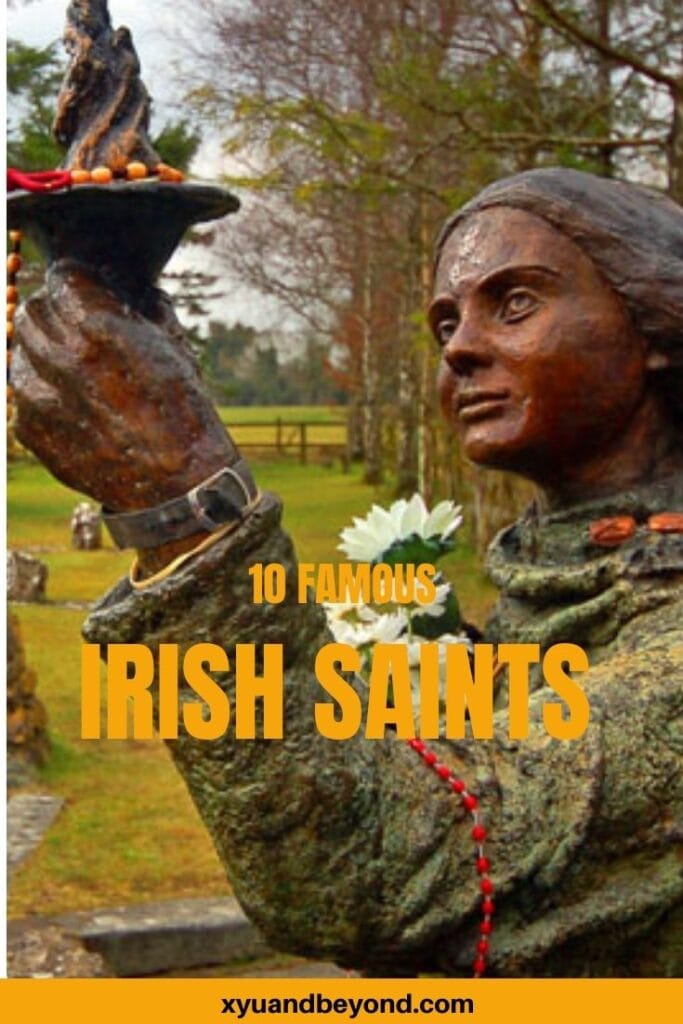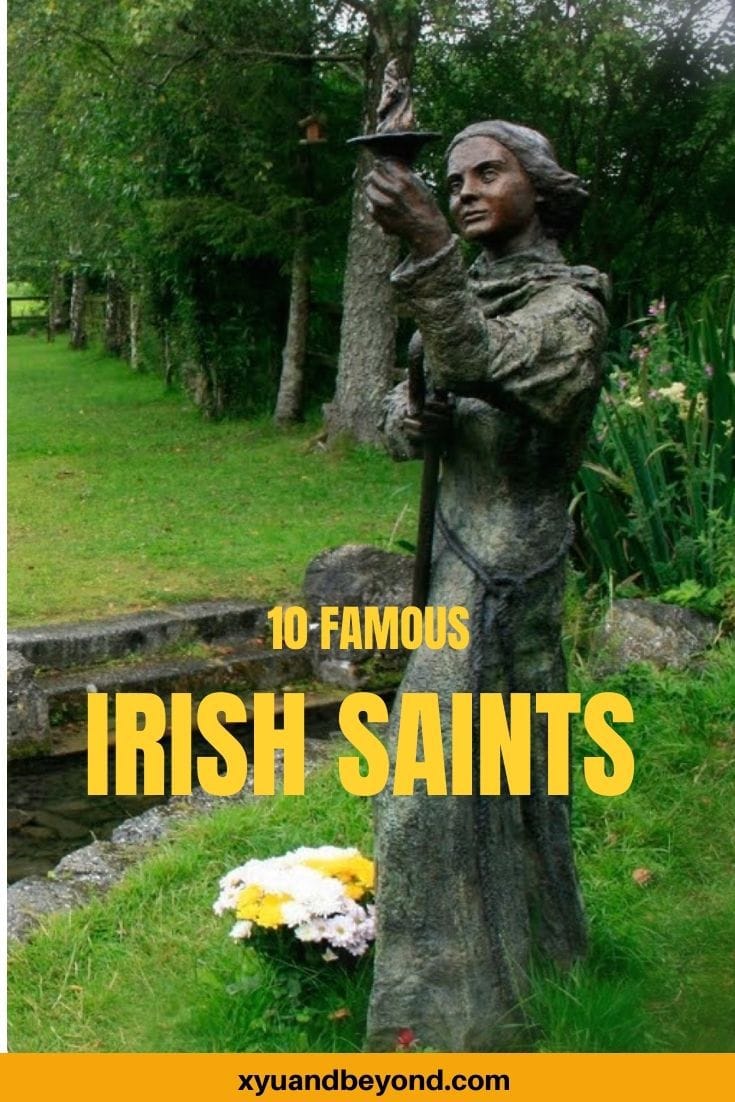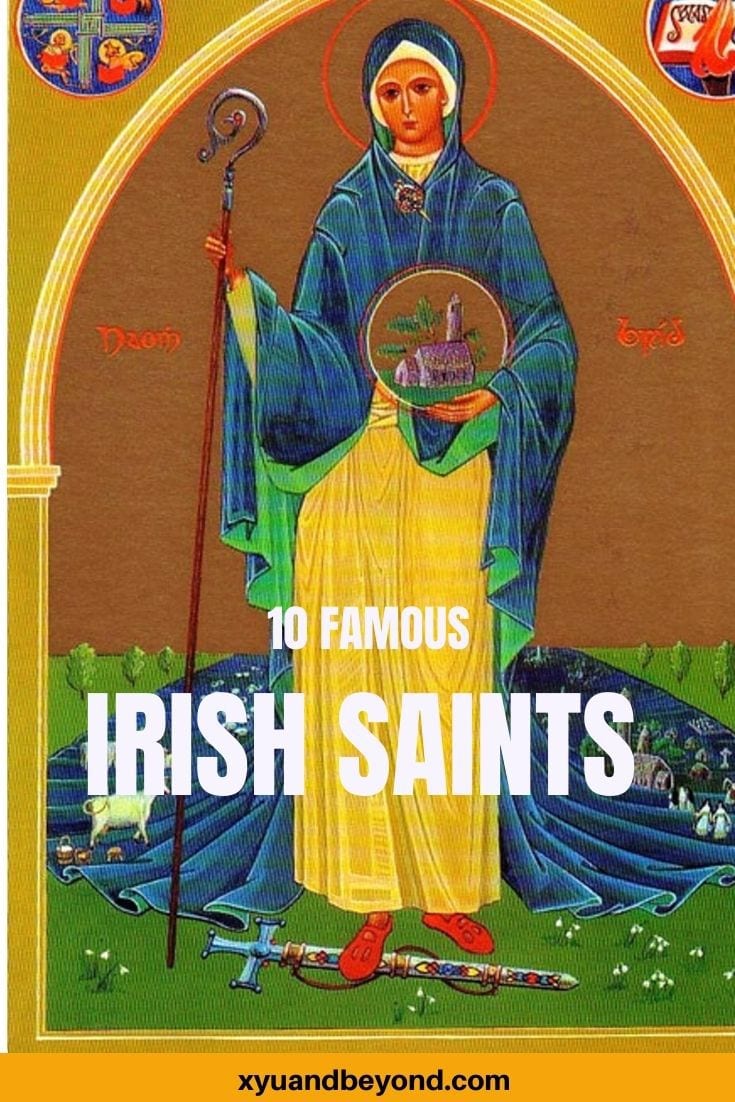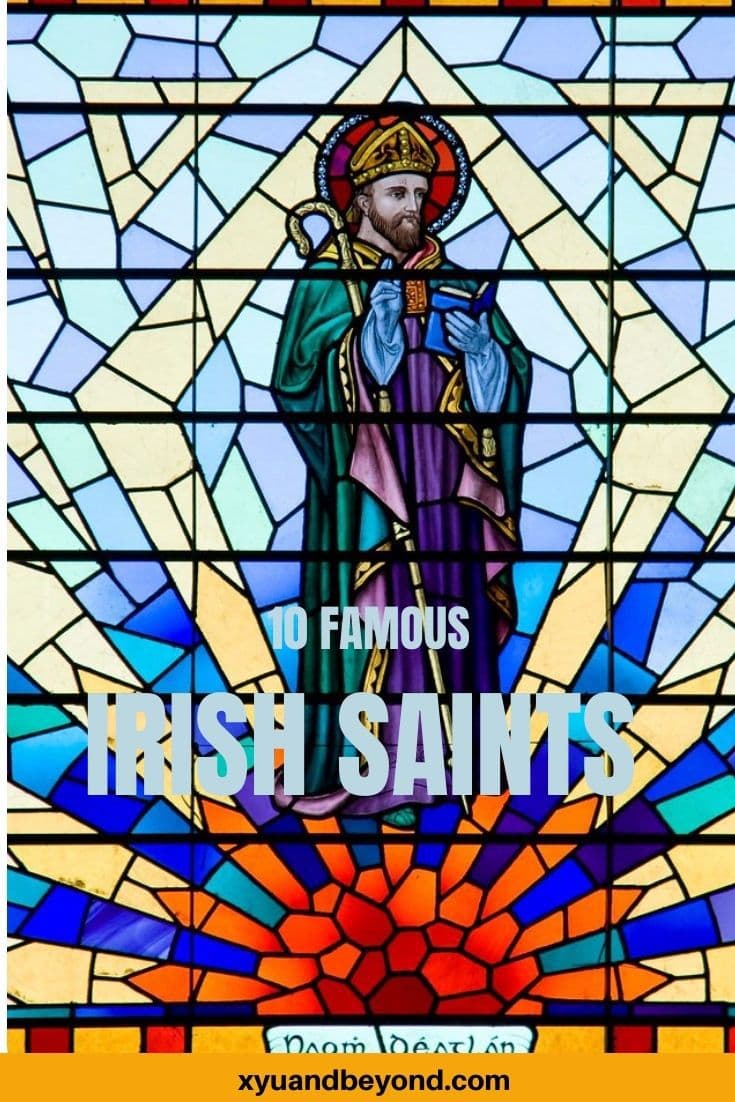Famous Irish Saints 10 Saints of Ireland
The Dark Ages descended on Britain after the fall of the Roman Empire and caused many scholars and Christians to flee to Ancient Ireland (also known as Hibernia) as pagan beliefs began to return Britain to a society of warfare and clan revival.
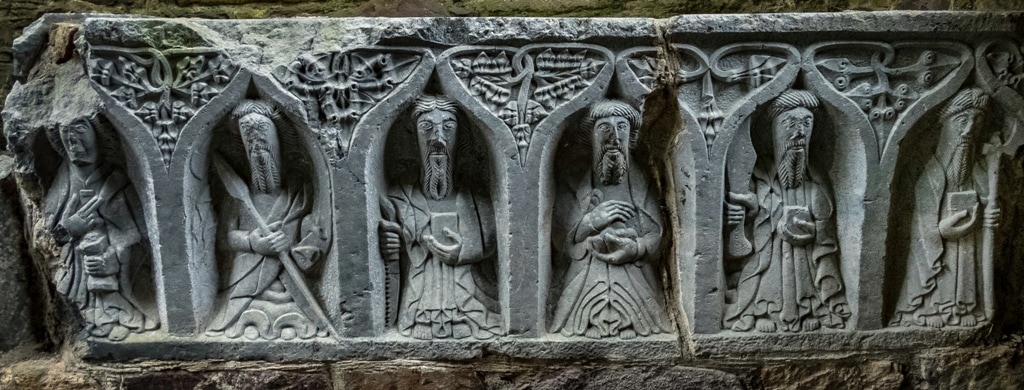
In Ireland however, a new age was dawning and the country became known as the Land of Saints and Scholars. Ireland began to be the centre of Christianity and a growing culture of monks and the church. This is my list of my favourite 10 famous Irish saints and how to follow in their footsteps and visit where they preached, where they are buried and what they represent.
Who are the 3 patron saints of Ireland?
Among the most famous saints of Ireland is of course St. Patrick who is one of Ireland’s official patron saints. There are actually three patron Saints of Ireland these include Saint Brigid, Saint Columba (Saint Colmcille) and of course St. Patrick.
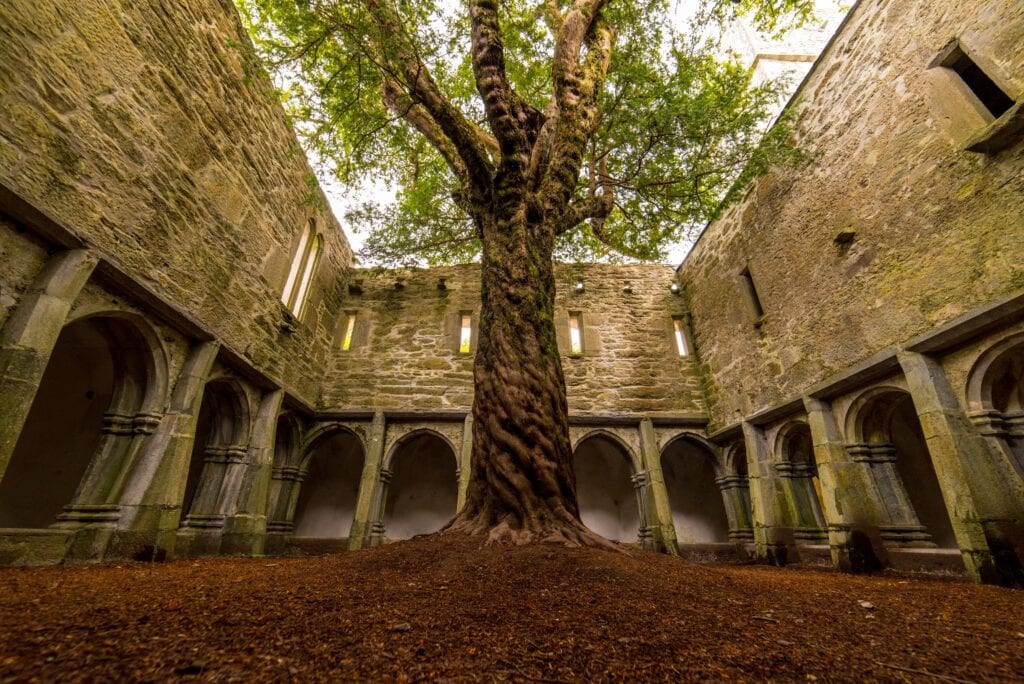
- Famous Irish Saints 10 Saints of Ireland
- How many saints are there in Ireland?
- The Saints of Ireland
- Patron Saint of Ireland – Saint Patrick – March 17th
- Saint Brigid – February 1st
- Places to visit associated with St. Brigid
- Saint Colmcille – 9th June
- Places to visit that are associated with St. Columba
- Famous Irish Saints
- Saint Finbarr – September 25
- Places to visit that are associated with Saint Finbar
- St. Canice – October 11th
- Places to visit that are associated with Saint Canice
- Saint Brendan – 16th May
- Places to visit associated with St. Brendan
- St. Declan – July 24
- Places to visit associated with St. Declan
- St Kevin – 3rd June
- Places to visit associated with St. Kevin
- St Oliver Plunkett – 1st July
- Places to visit associated with St. Plunkett
- St. Buíthe – no feast day
How many saints are there in Ireland?
According to Catholic lists the Saints of Ireland number 331 according to Catholic.org.
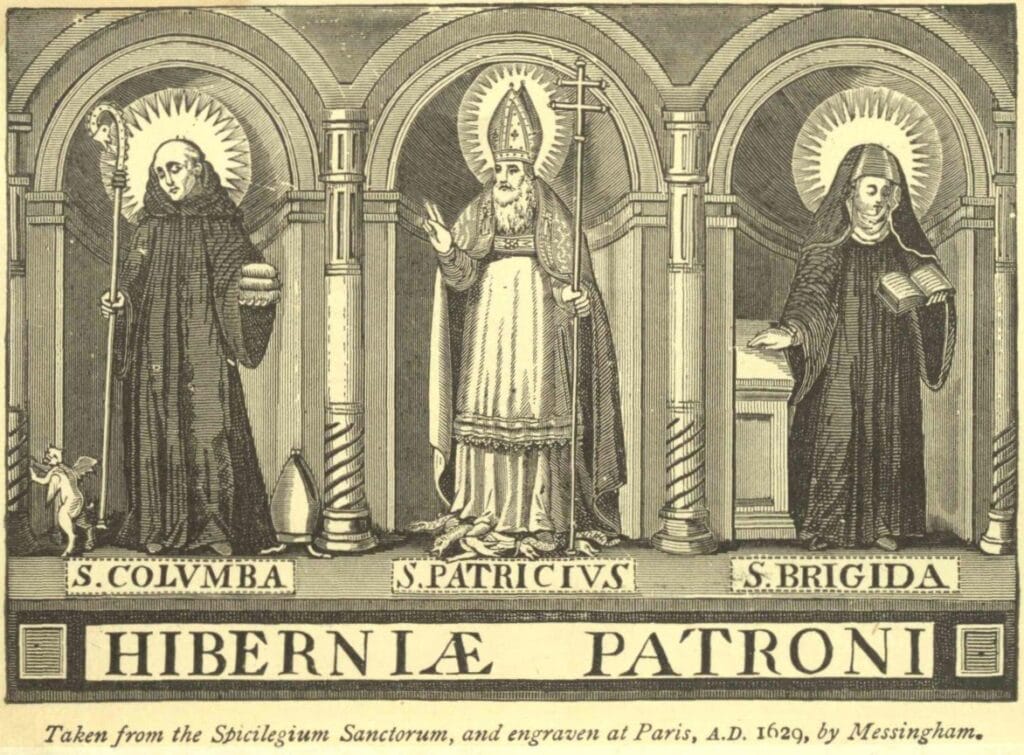
The Saints of Ireland
Patron Saint of Ireland – Saint Patrick – March 17th
Everyone knows Saint Patrick and his most famous legend – that of driving the snakes out of Ireland. St. Patrick first came to Ireland as a slave and when he escaped slavery he is thought to have returned to Ireland to bring Christianity to the island. St. Patrick is the most important patron saint of Ireland.
Irish folklore credits Patrick with teaching the doctrine of the Holy Trinity by using a shamrock to illustrate the three persons in one god.
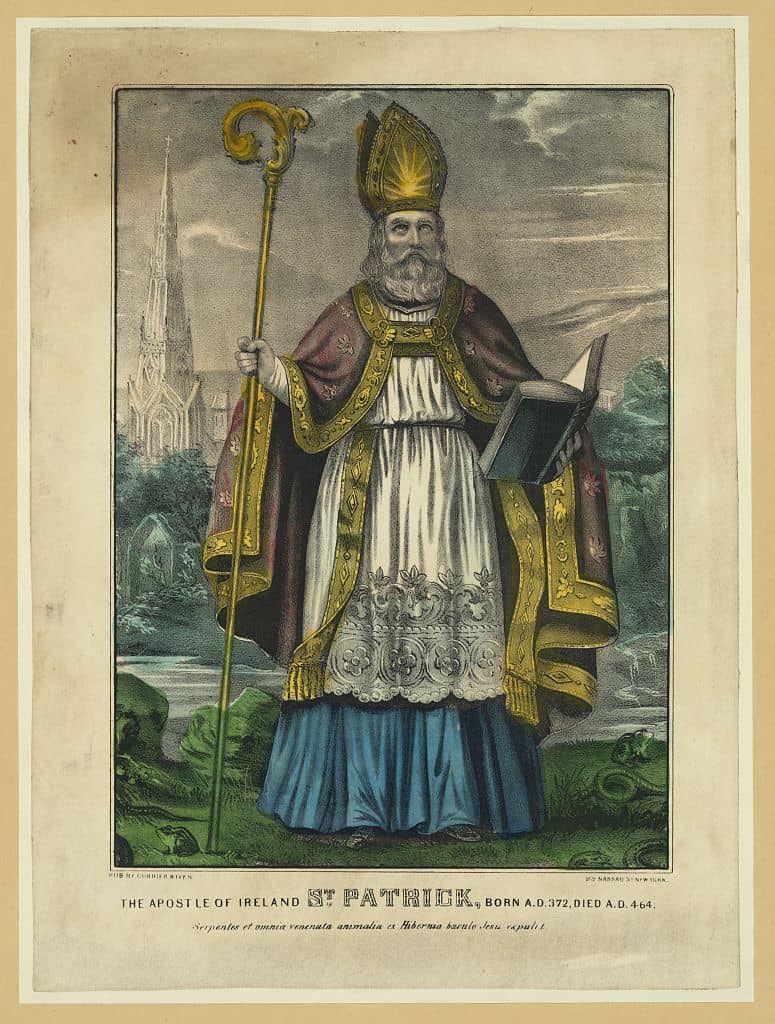
Places to visit that are associated with St. Patrick
Slemish – Antrim and Killala Bay – Mayo
When Patrick was captured and became a slave it is believed that he herded sheep near Slemish mountain in Antrim and possibly Killala Bay in Mayo.
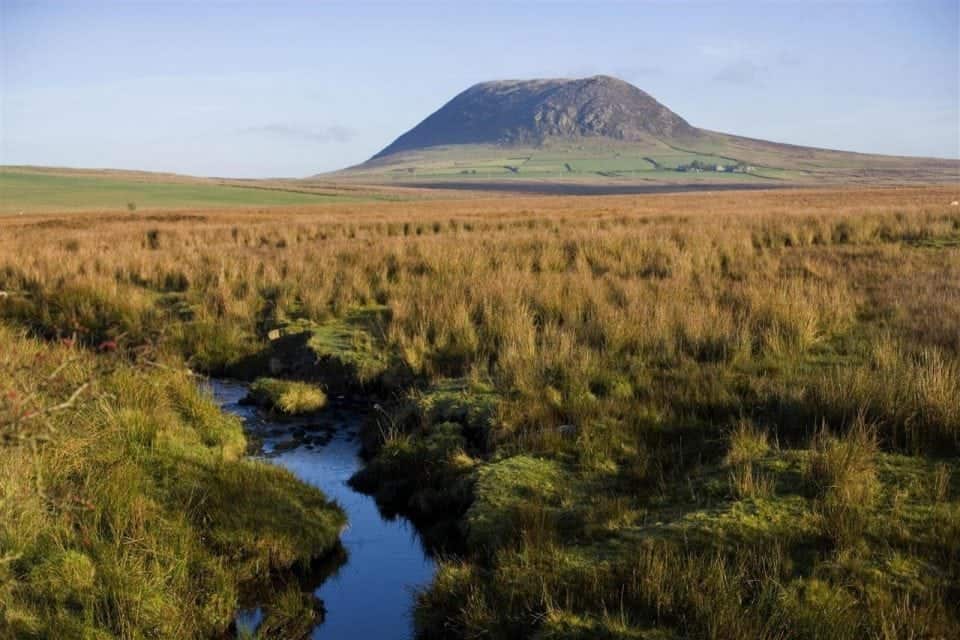
Saul – Down
Stories have it that the first church founded by Patrick was in Saul in a barn that had been donated to him by a local chieftain. The stories also say that Patrick died here and on the crest of Slieve Patrick you will see a massive statue of him with bronze panels detailing his life story.
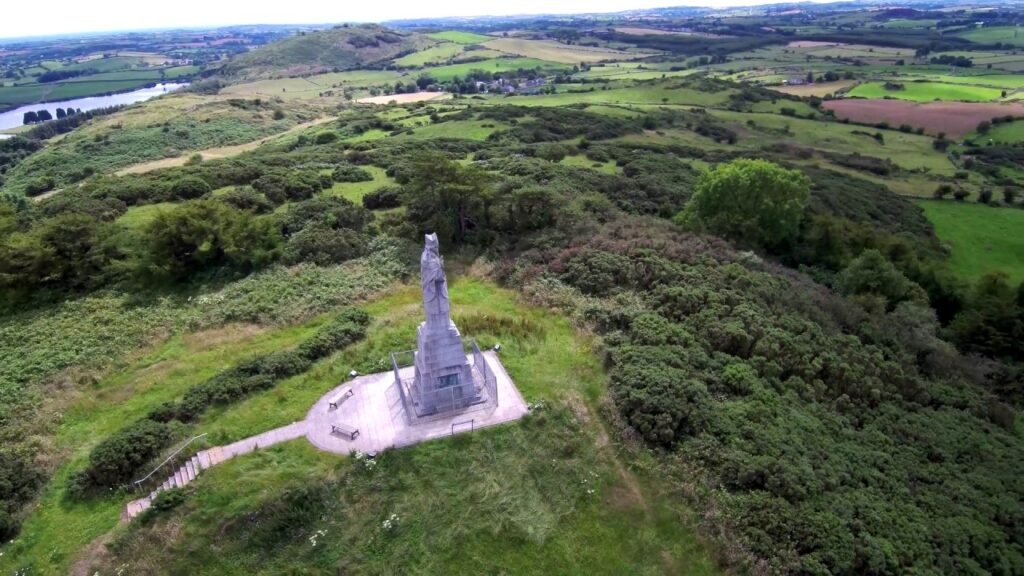
Croagh Patrick – Mayo
If you are Catholic and in Ireland or visiting Ireland this is the mountain pilgrimage that is taken by many. The legends say that Patrick climbed the mountain and fasted for the 40 days of Lent. The last Sunday in July is the day that thousands of pilgrims climb the mountain like St. Patrick did.
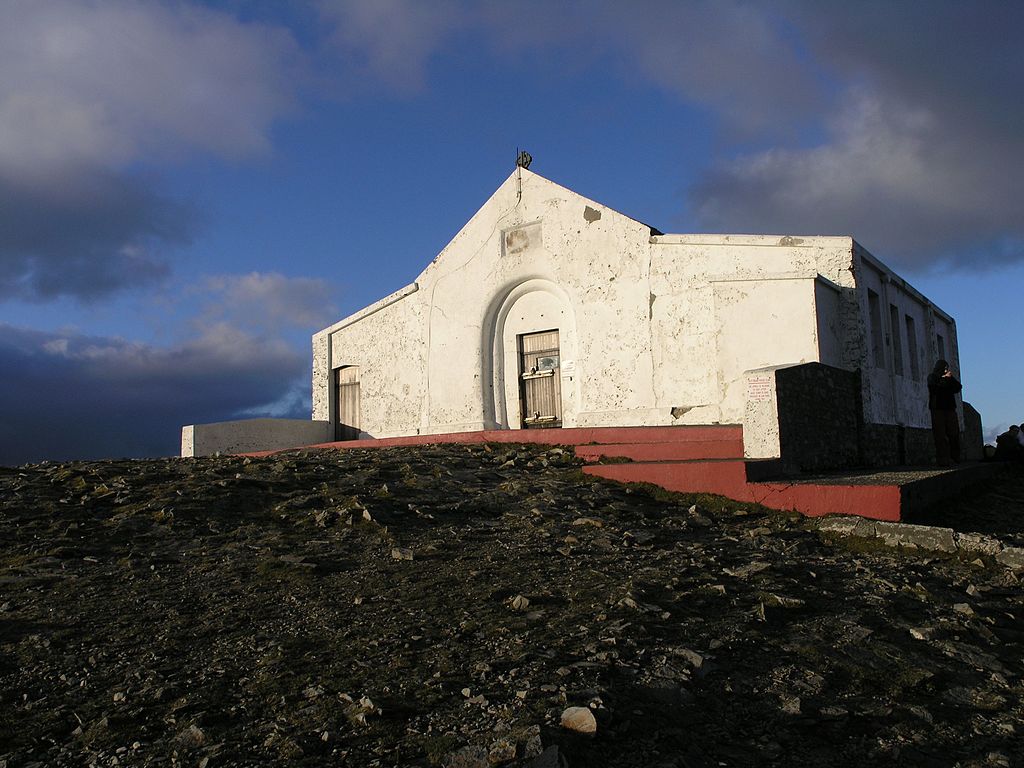
Lough Derg – Donegal
In the middle of Lough Derg Donegal, you will find St. Parick’s Sanctuary where you can spend 3 days fasting and praying in August. Legend has it that Patrick killed an ancient serpent on the lake and its blood turned the waters red.
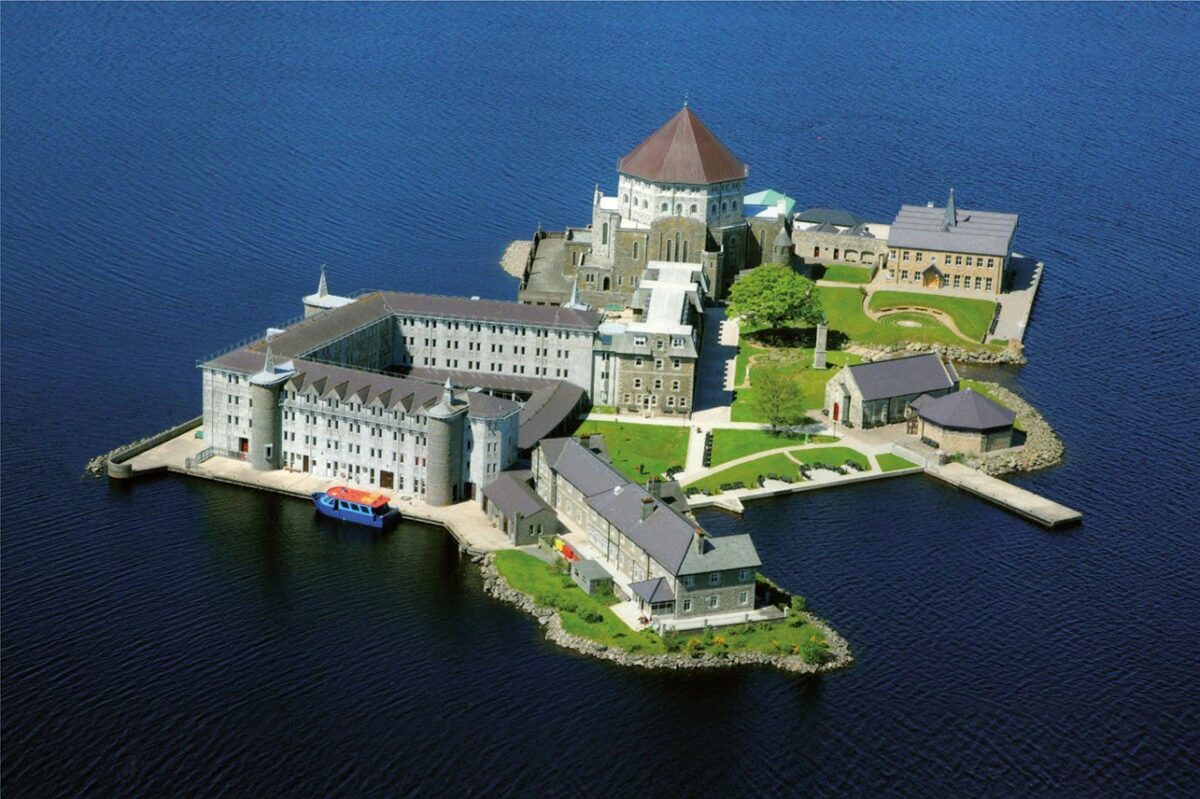
Armagh – Armagh
Armagh is the primary seat of the Catholic Church in Ireland and the Church of Ireland (which is sort of a protestant/Anglican version) and it is said that Patrick founded the Church here both cathedrals in the town are named after Patrick.
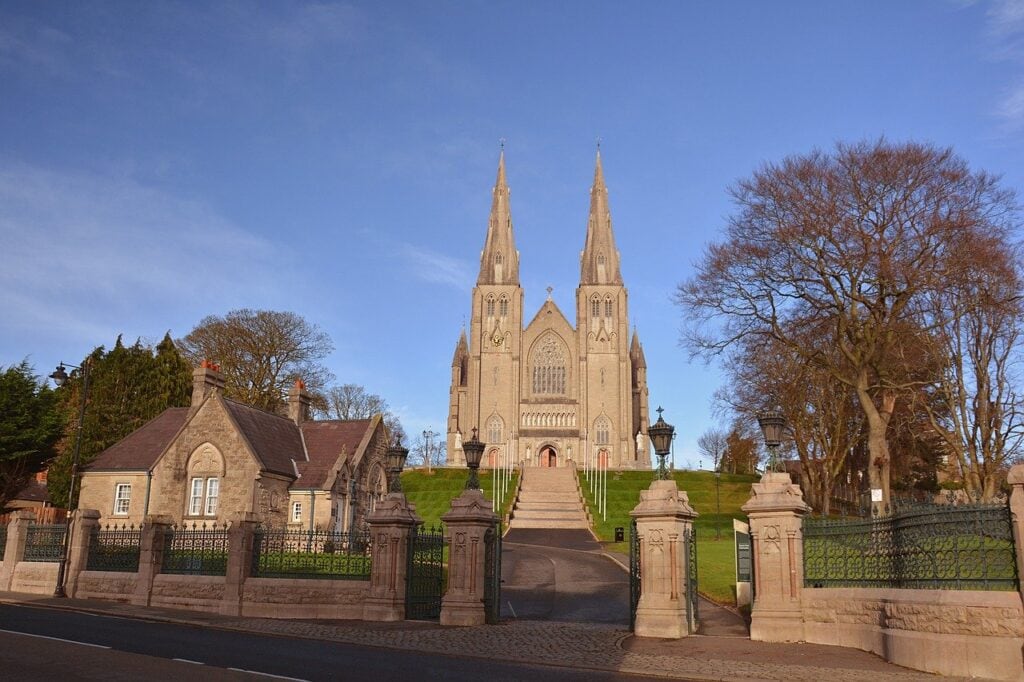
Downpatrick – Down
It is claimed that Patrick was brought here after his death and buried on the grounds of Down Cathedral.
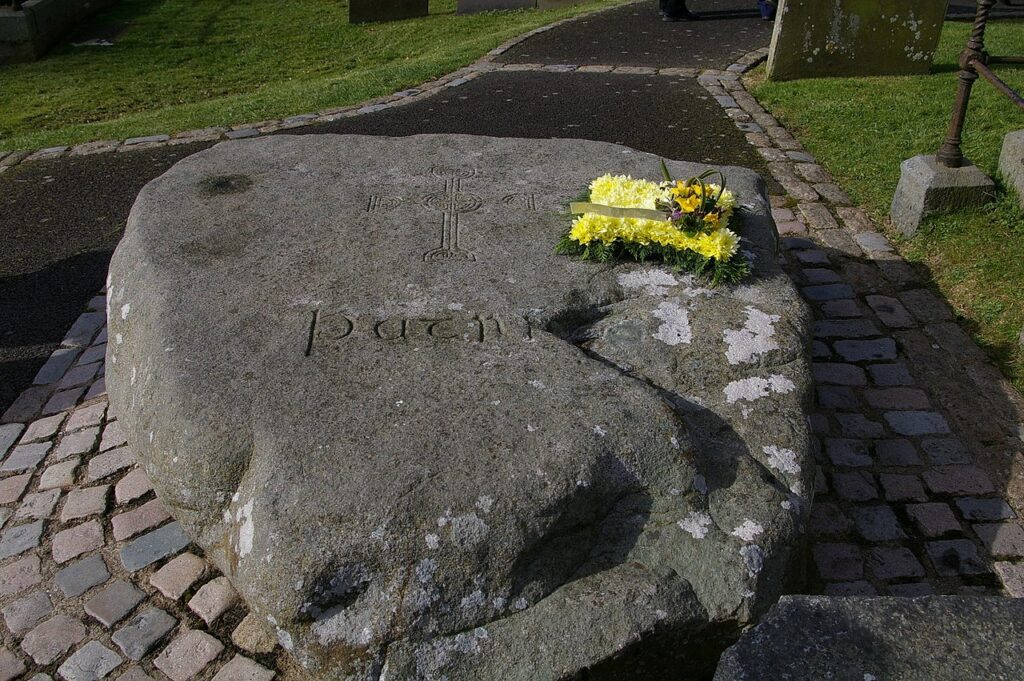
Saint Brigid – February 1st
Brigid is Ireland’s only female patron saint and she was born around 451AD in County Louth the daughter of the King of Leinster and a Pictish slave who had been baptized by St. Patrick.
In pre-Christian mythology, there was a Goddess Brigid who held many of the same traits attributed to the Christian Brigid and it is likely that the two became conflated in order to Christianize the pagans. Interestingly St Brigid’s feast day falls on the pagan festival of Imbolc or the arrival of spring.
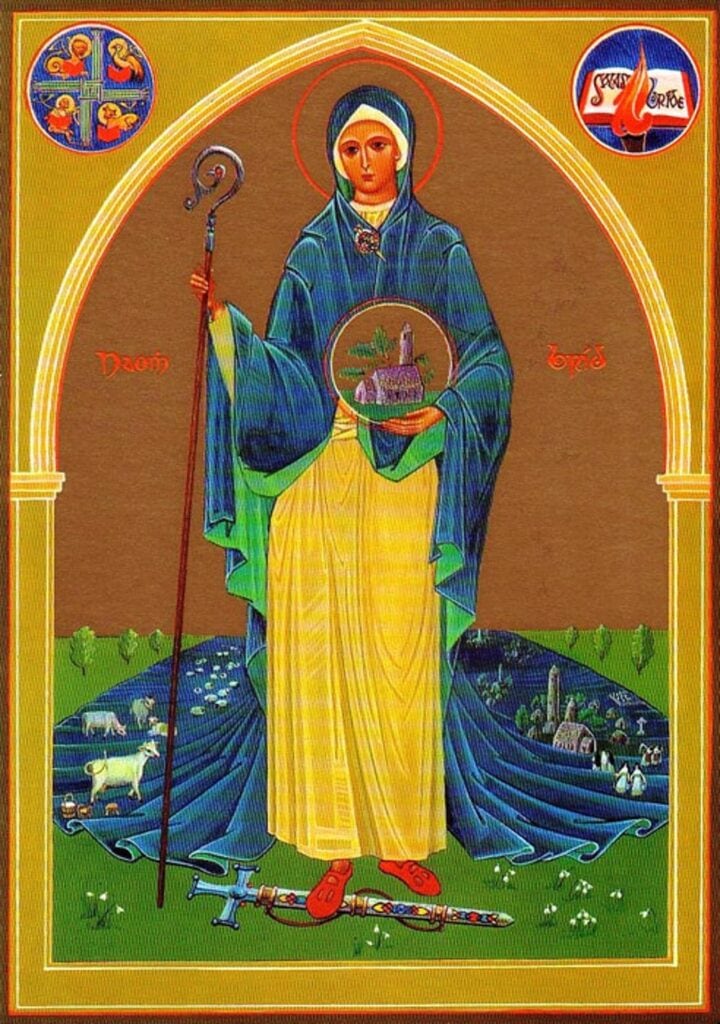
The stories of Brigid tell of how she prayed for her beauty to be taken away so she wouldn’t be marriageable and could become a num to take care of the poor.
On St. Brigid’s day, the Irish weave a rush cross which they place over their doors. This more than likely harks back to pagan celebrations where they wove these “crosses” to protect their homes from fire.
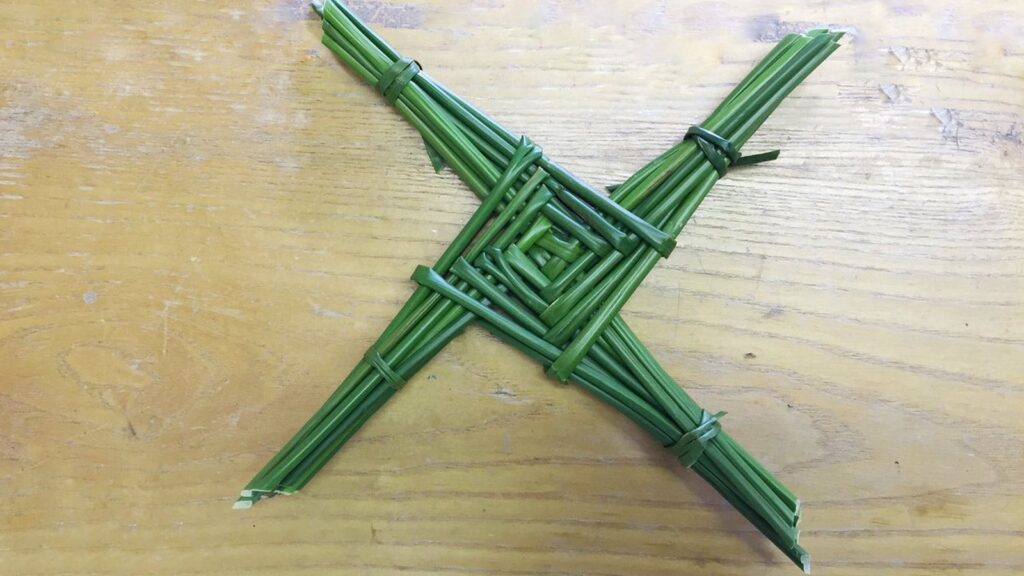
Saint Brigid established her convent Cill-Dara in Kildare around 479AD and also founded a school of art that created the Book of Kildare a famous illuminated manuscript. According to legend, she chose the spot as it was where a shrine to the Irish goddess Brigid was located. An eternal flame on the shrine was regularly tended to by a group of young women.
Places to visit associated with St. Brigid
St Brigid’s Holy Well
The well is fed by a spring that flows underground before appearing again under a stone archway. The stones below the archway are known as St Brigid’s slippers. The stream then flows past a modern bronze statue of Saint Brigid. There is a tree nearby covered in what are called “clooties” these are rags left by folks who believe that if they hang a piece of cloth from a troubled or ill person the problem will disappear as the rag disintegrates.
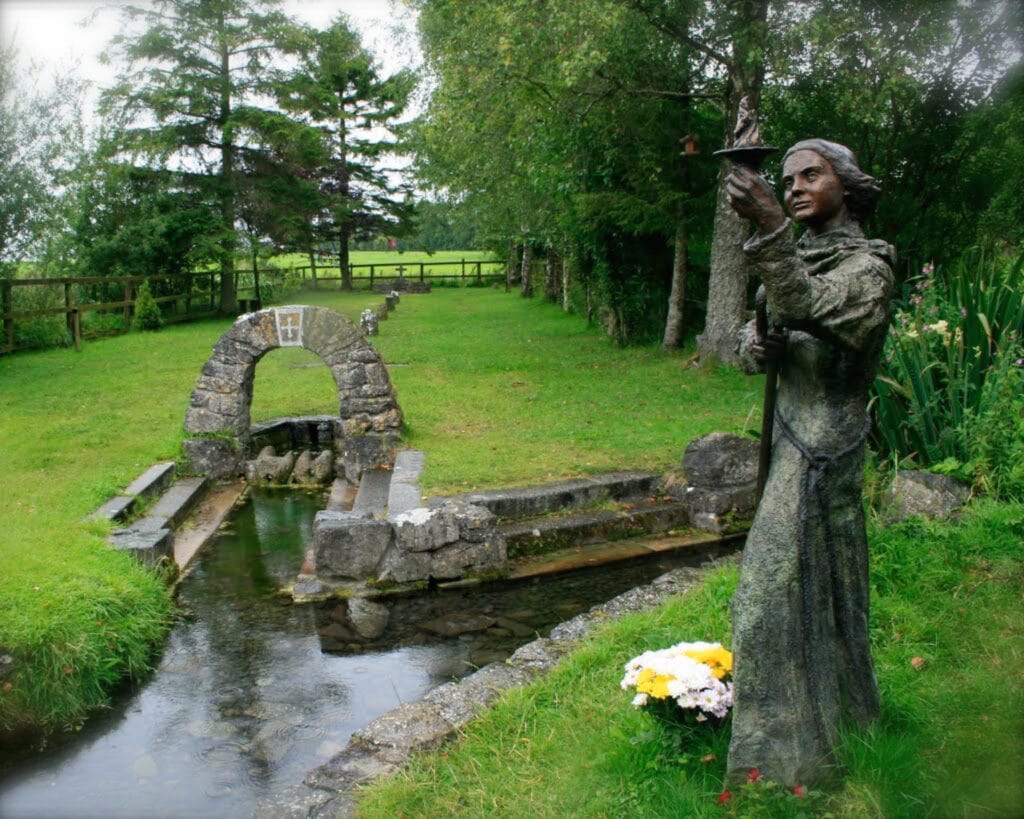
The Curragh – Kildare
The Curragh is known as St. Brigid’s Pastures. According to legend, it was granted to St. Brigid by the King of Leinster in return for reducing the size of his ears. Having agreed to settle for a portion of land that her cloak would cover, Brigid threw down her cloak and it spread until it encompassed the whole Curragh (5,000 acres).
St. Brigid’s Cathedral & Round Tower – Kildare
This Cathedral is said to be built on the original site of St. Brigid’s church which was established under an oak tree. The modern Cathedral was almost completely rebuilt in the late 19th Century. The building contains Ireland’s Highest accessible Round Tower built in the 12th century and the remains of St. Brigid’s eternal flame was kept by her Sisters until the time of the reformation.
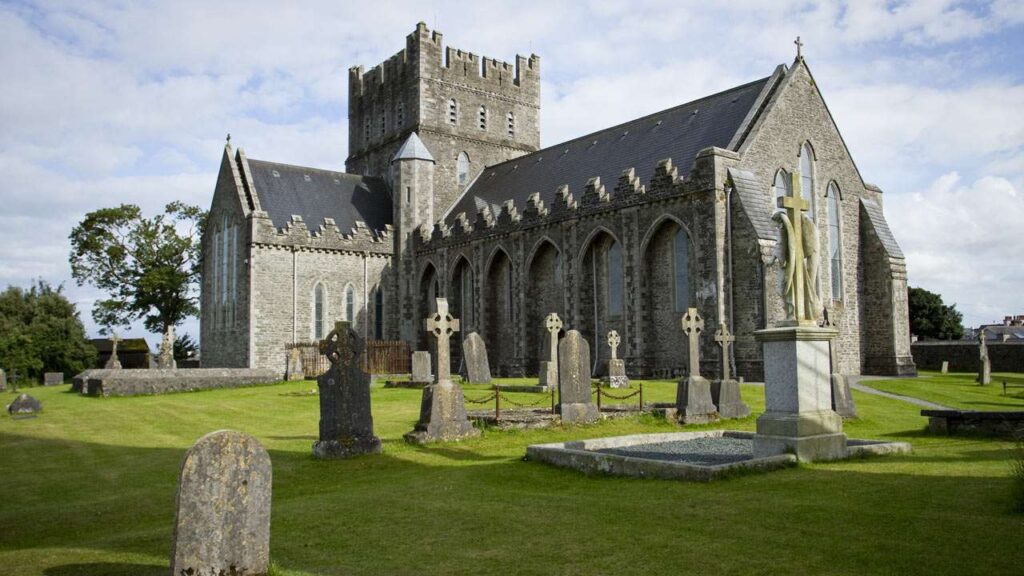
Saint Colmcille – 9th June
Columba was born in Donegal in the 5th Century and was said to be able to trace his ancestry to Niall of the Nine Hostages, the legendary Irish High King. His Irish name was Colmcille and he travelled as a monk over the north of Ireland. St. Colmcille is the city of Derry’s patron saint. When he was at Clonary Abbey he got into an argument with Finian around his copying of a manuscript without permission. But Finian said that this was theft–illegal copying! He demanded that Columba hand over the copy he had made.
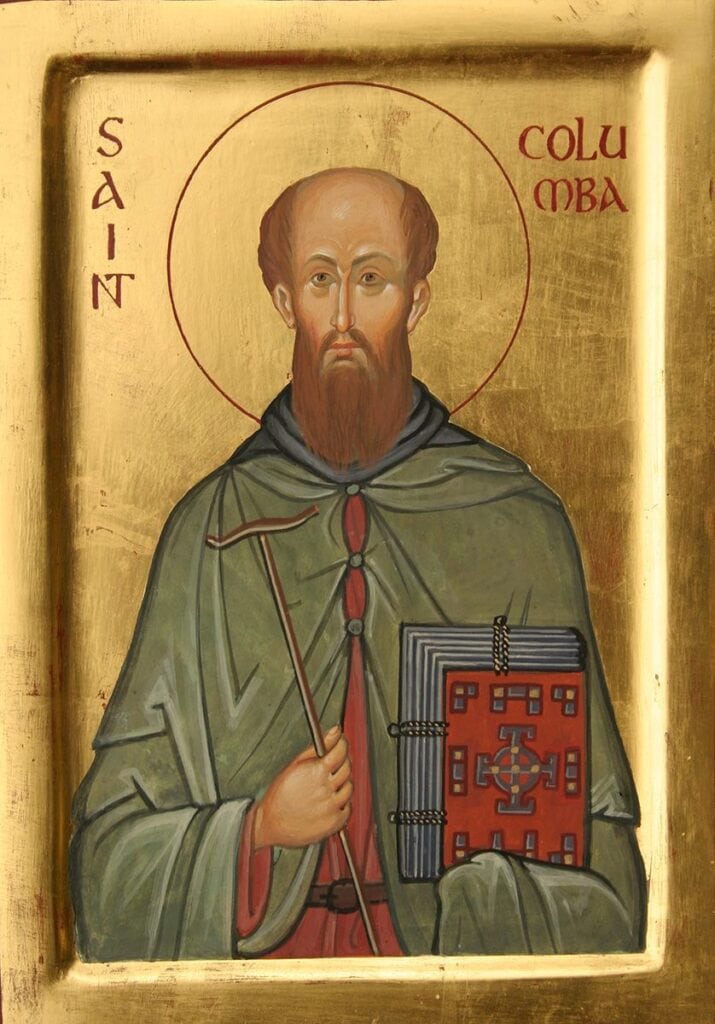
King Diarmait mac Cerbhiall, the High King of Ireland, decided between the two of them that the copy of the book belonged to Finian. Columba believed that “It is not right,” he said, “that the divine words in that book should perish, or that I or any other should be hindered from writing them or reading them or spreading them among the tribes.”
But the king ruled against him saying, “To every cow belongs its calf; to every book its copy.” In other words, every copy of a book belonged to the owner of the original book.
Sadly the two continued to argue Columba committed another crime by hiding a fugitive from the King resulting in the Battle of Cúl Dreimhne, where over 3000 died and Columba was exiled as a result.
He was so guilt-stricken that he swore never to return to Ireland and sailed for Scotland where he would attempt to convert the Pictish pagans.
Places to visit that are associated with St. Columba
Glencolmcille – Donegal
Glencolmcille is named after Saint Colm Cille or Columba, The name Glencolmcille (Gleann Cholm Cille) translates into English as the Valley of Com Cille. Colm Cille and his followers lived in the valley for a time and the ruins of several of their churches can still be seen there.
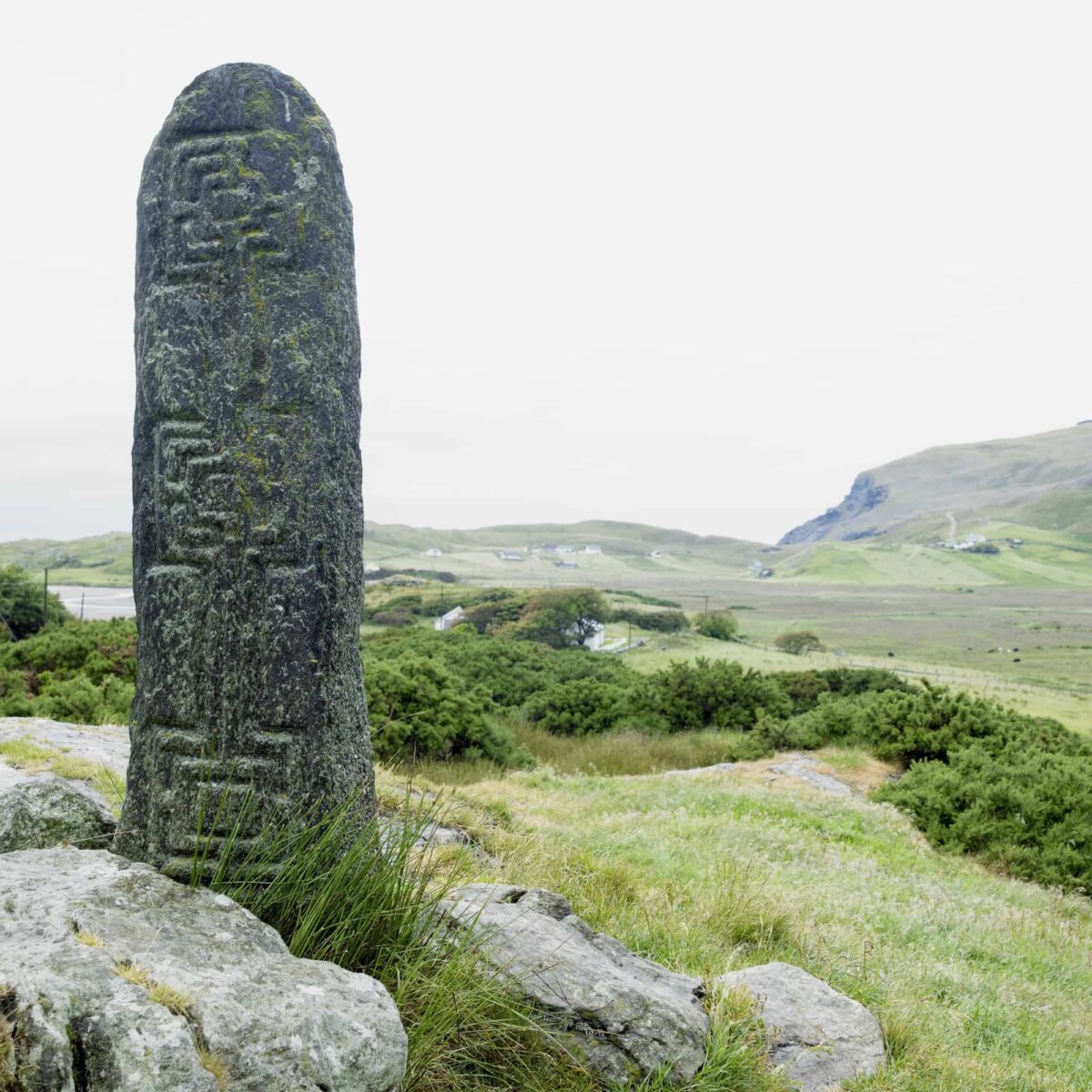
Every June 9th the local folk and some pilgrims go through the 15 Stations, Turas, or journey. This is a religious process that includes 15 different stations or stáisiúin that are within 9 different townlands. The Turas themselves are actually stone pillars and probably pre-date Christianity.
Derry City – Derry
The city of Derry offers a self-guided walking tour of sites associated with their city’s patron saint. He later left Ireland for the island of Iona and also went on to become closely associated with Scotland.
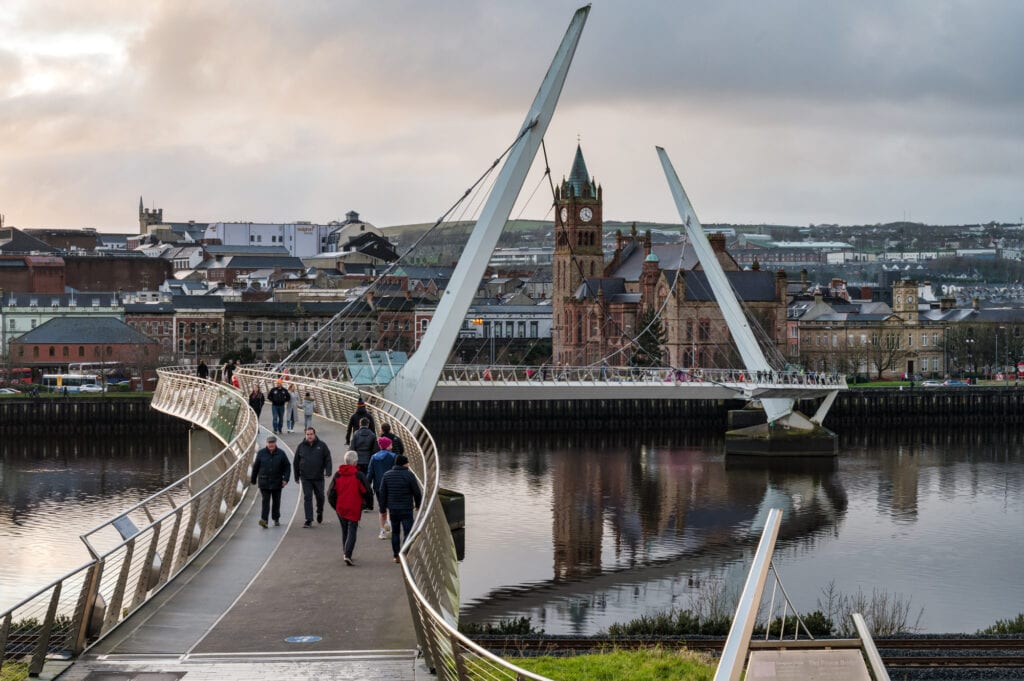
Durrow – Offaly
Durrow is where a monastery was founded by St Columcille about 550. The Book of Durrow is an illuminated Gospel manuscript that pre-dates the Book of Kells. Although the monastery no longer exists, the High Cross of Durrow, together with several Cross Slabs are now housed, on-site, in a small exhibition within a conserved church.
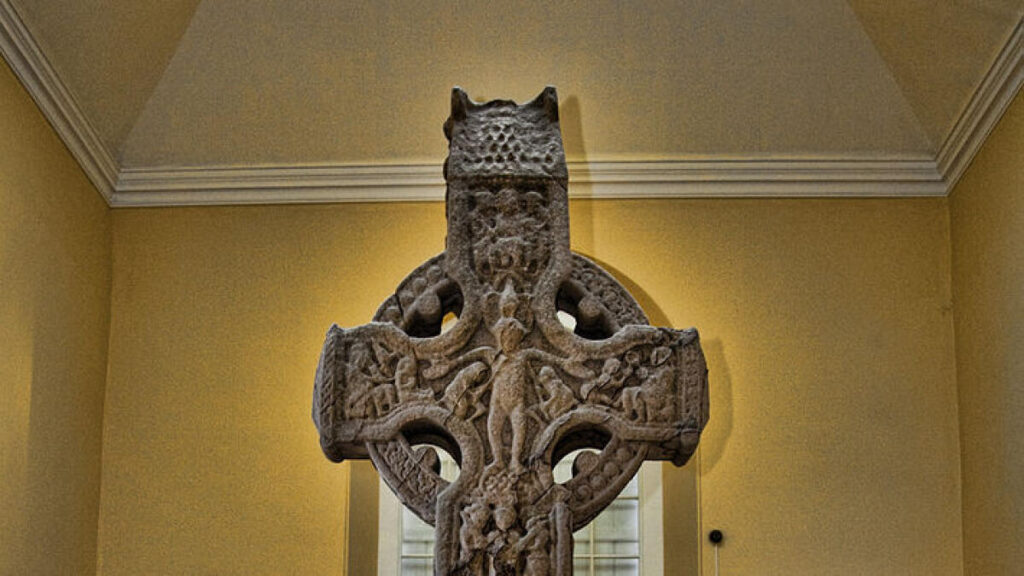
Situated about 500 metres north of the high cross is a holy well known as St Colmcilles well, above the entrance to the well, which has steps leading down to it, is a plaque with AD550 written on it.
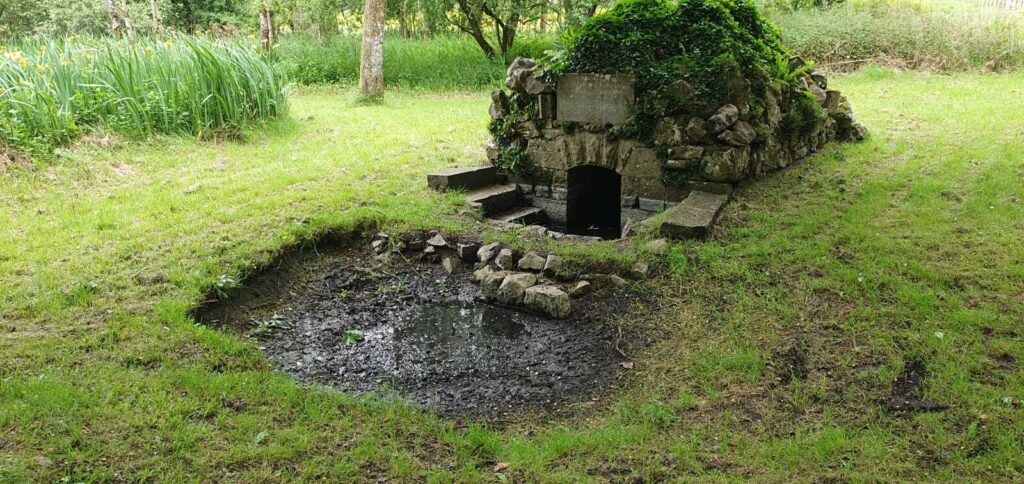
Famous Irish Saints
Saint Finbarr – September 25
What is St Finbar the patron saint of? Saint Finbarr is the patron saint of Cork and he was born in Connaught to royalty and sent to be educated in Kilkenny, where the monks named him Fionnbharr (white head) because of his light hair. Even as a young child he was known for his miraculous cures. Finbar took several pilgrimages to Rome and later settled on a small island in Lough Eiroe where he founded a monastery on the River Lee. This monastery eventually became the city of Cork. He later became the first Bishop of Cork

When Finbar died in Cloyne it was said that the sun didn’t set for two weeks after he died.
Places to visit that are associated with Saint Finbar
Gougane Barra
Saint Finbarr is said to have built a monastery on an island in the lake during the 6th century. The present ruins date from around 1700 but during the times of the Penal Laws, Gougane Barra’s remoteness meant that it became a secret area for the celebration of Mass.
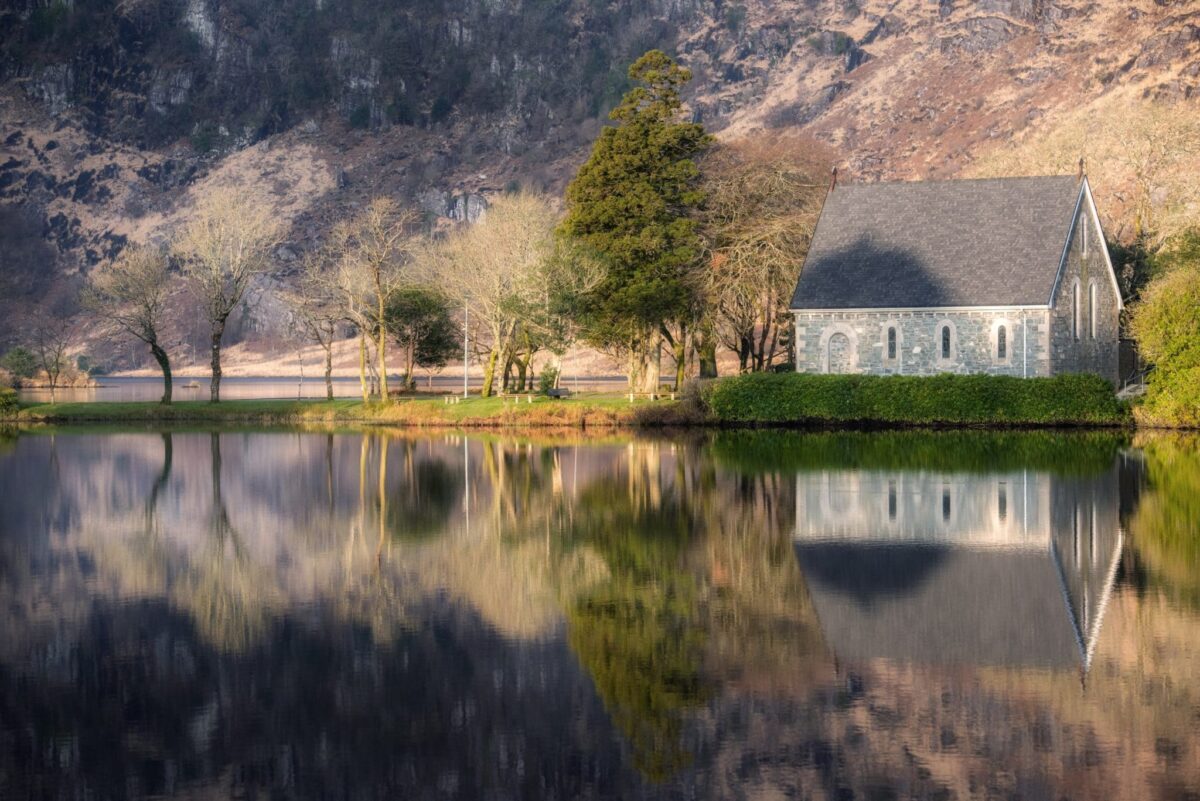
The nineteenth-century oratory which stands near the original monastery is famous for its picturesque location and richly decorated interior and is a popular place for wedding photography.
St Finbar’s Oratory is the last stop on one of the five Pilgrim Paths of Ireland which starts 35-kilometres away in Drimoleague.
Saint Finbarr’s Cathedral
The Cathedral is in Cork city and it is a three spired building located on the River Lee. The site dates back to pre-Christian times and it is where the 7th-century monastery founded by Saint Finbarr was built. It is believed that it was destroyed by the Normans and later during the Reformation it became part of the protestant Church of Ireland.
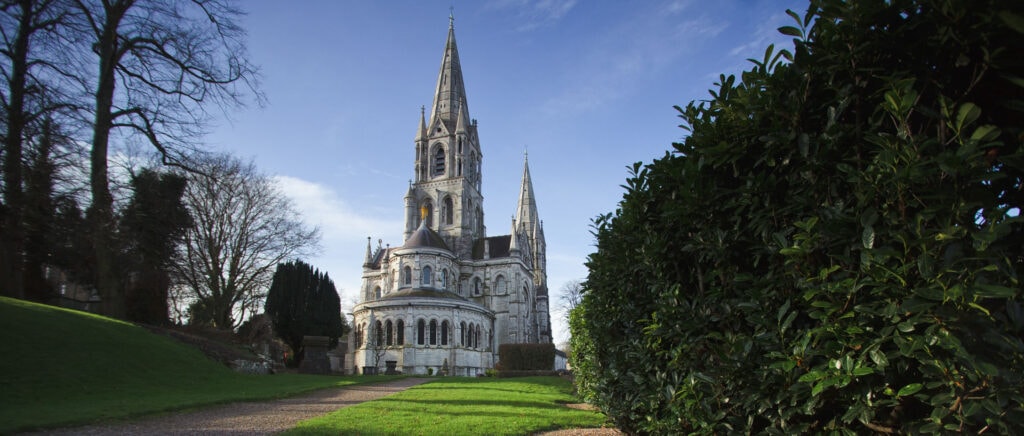
Finbarr’s Cemetery
Finbarr is buried in Cork, in one of the oldest cemeteries in Ireland which is still in use. Located on Glasheen Road, it was first opened in the 1860s. The entrance gateway was erected circa 1865, and the mortuary chapel was consecrated in 1867.
St. Canice – October 11th
St. Canice is the patron saint of Kilkenny and of course, St. Canice’s Cathedral is built in his honour. Canice was born in Glengiven and became a monk when he was ordained in Wales.
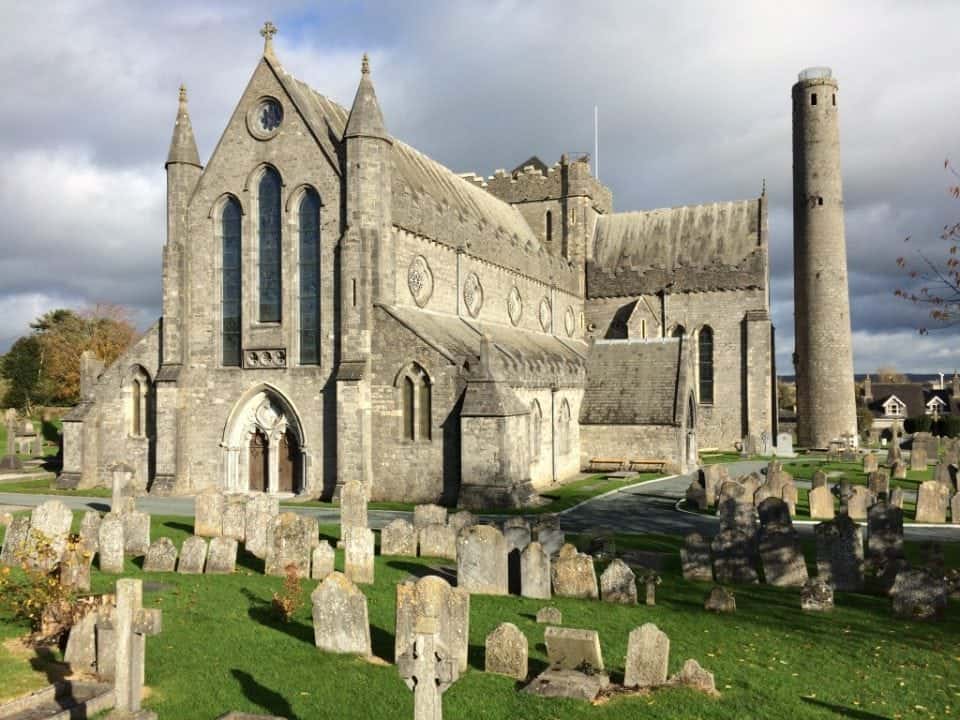
Canice was a friend of Saint Columba and was a successful missionary. He built a monastery at Aghaboe and likely one at Kilkenny.
Places to visit that are associated with Saint Canice
St. Canice’s Cathedral and Round Tower
The Cathedral is one of the most well-known sights in Kilkenny, which was once a Medieval centre of Ireland. The roots of St. Canice’s Cathedral extend back to the 6th century when the Church of St. Canice stood here. One of the many items found within the Cathedral is the ancient stone Chair of St Kieran, which is still used today to enthrone the Church of Ireland Bishops.
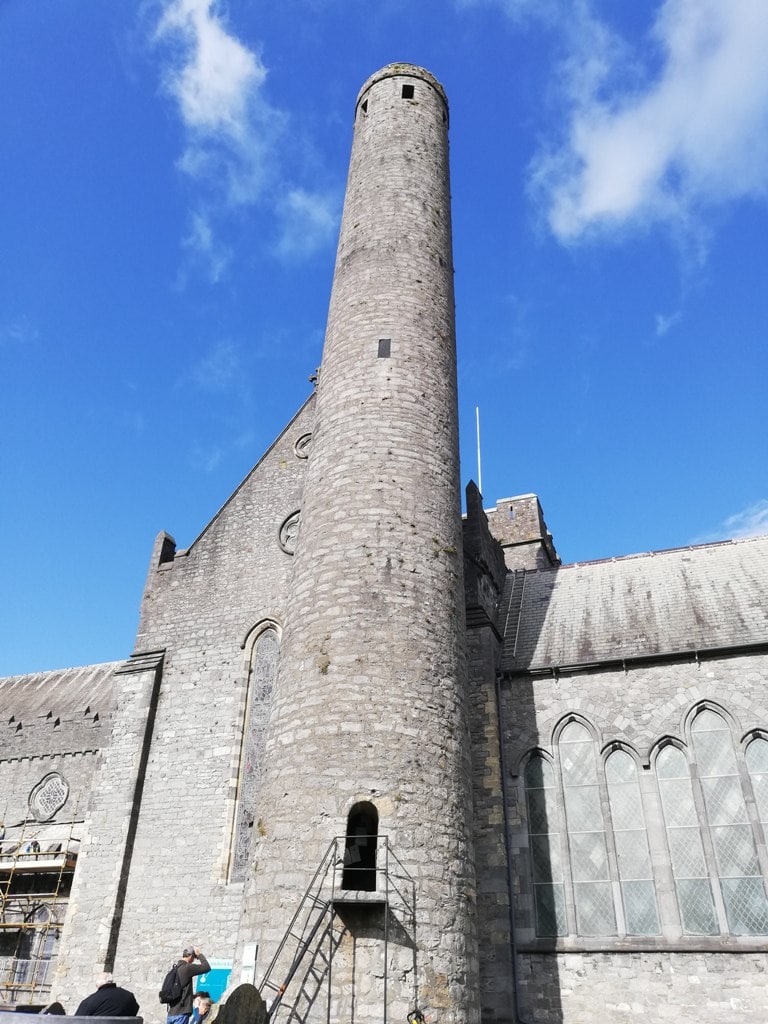
Aghaboe Abbey
The Abbey was founded in the sixth century by St. Canice. The abbey grew into a major centre of learning, commerce and agriculture.
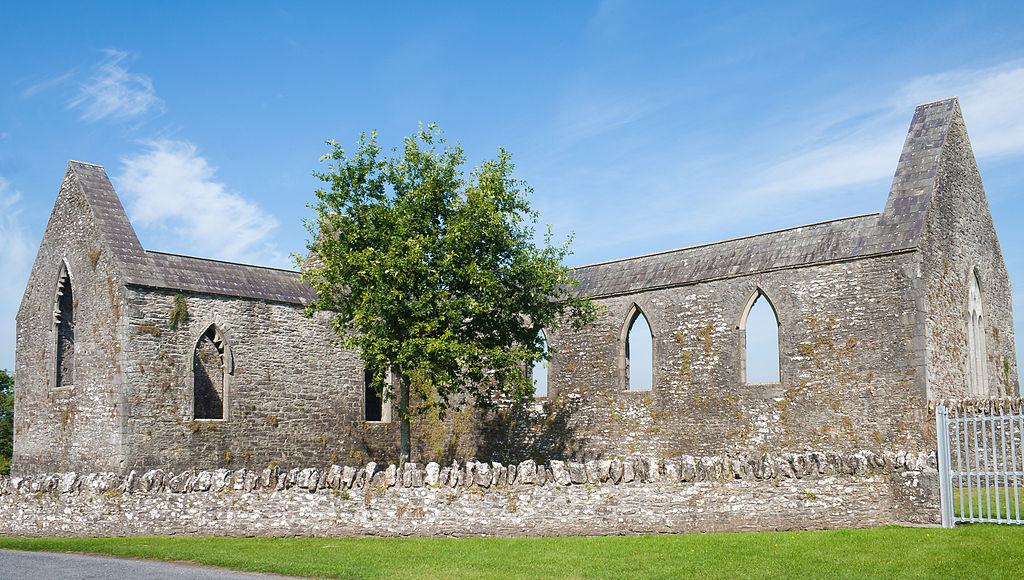
After the original monastery burned in 1234, it was rebuilt as an Augustinian priory. Today a Church of Ireland, which dates from the 1700s, stands where that priory once stood. This church appears to contain some fragments of the Augustinians’ buildings. On the east side of the doorway, visitors can see a carved limestone head that dates from the Middle Ages. The small belltower at the northwest corner of the church has the same proportions as one from the 1200s.
Saint Brendan – 16th May
Born in Kerry Saint Brendan was nicknamed the Navigator due to his legendary voyage across the Atlantic in a coracle. A coracle is a small leather boat and the Saint is said to have travelled with 14 other monks to find the Garden of Eden. Brendan is the patron saint of boatmen, mariners, sailors, travellers and whales
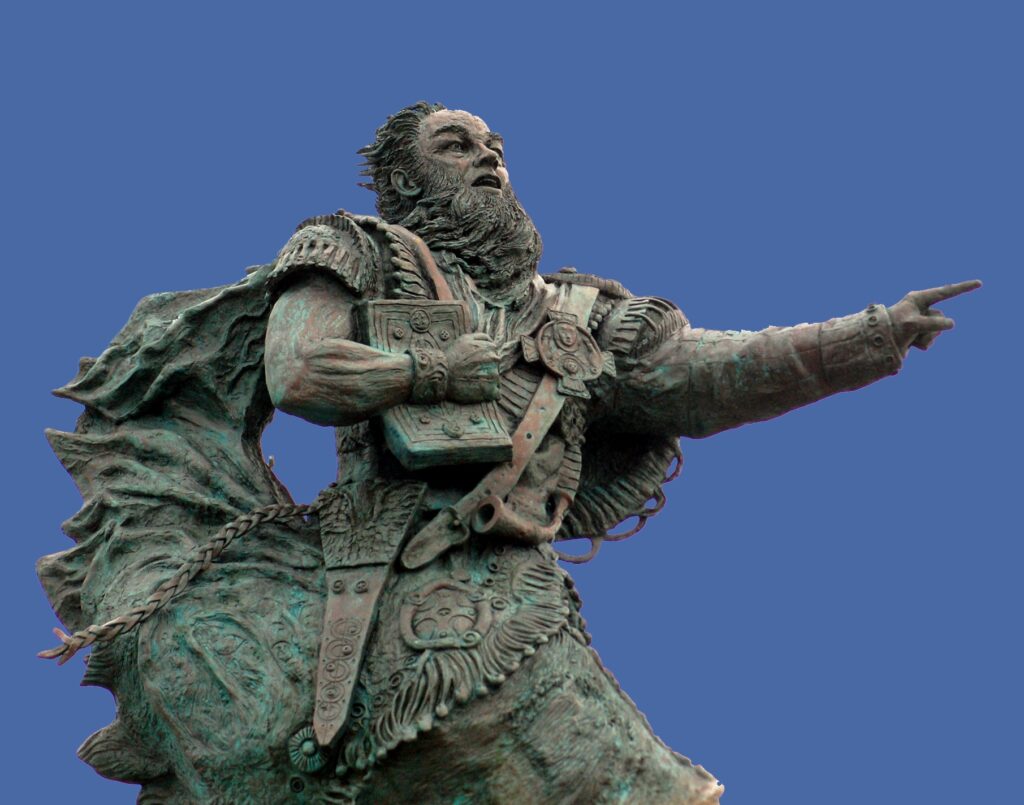
Irish legends say that the boat brought him to North America and it was his voyages that inspired Columbus who was said to have visited St Brendan’s monastery at Clonfert before sailing to find the new world.
St Brendan established monastic settlements at the foot of Mount Brandon on the Dingle peninsula and in later years established a monastery at Clonfert County Galway, where he is buried.
Brendan also visited Wales, England and Scotland and the cream liqueur, made in Northern Ireland from local whiskey and cream; Saint Brendan’s is named after him.

Places to visit associated with St. Brendan
Saint Brendan’s Cathedral Clonfert
A monastery was founded in the small townland of Clonfert in the mid-sixth century by Saint Brendan and the monastery was a thriving centre of learning for centuries. At one time it is estimated there were 3,000 monks based at Clonfert.
It was subjected to many Viking raids and was burned down in 1016, 1164 and again in 1179. The only remaining evidence of the monastery is the 12th century St Brendan’s Cathedral. The church is renowned for its 12th century Hiberno-Romanesque western doorway.
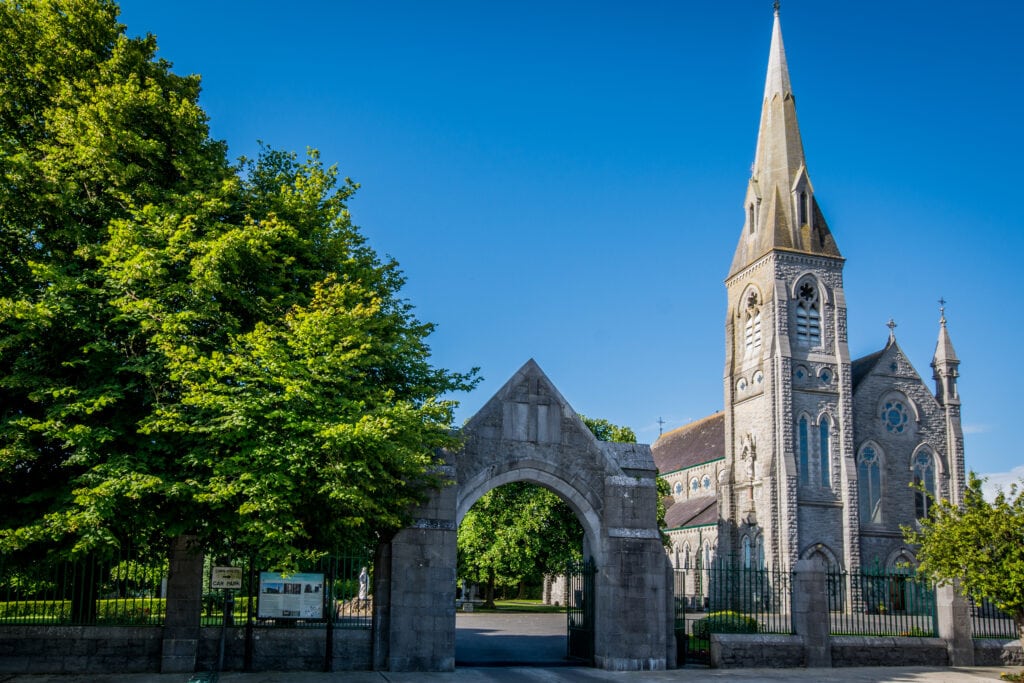
It is here, at one of Ireland’s oldest ecclesiastical sites still in use for worship and burial, the great saint Brendan the Navigator lies buried. He had, in fact, died elsewhere, at one of his other monastic foundations, Annaghdown, also in Galway at a convent presided over by his sister, Briga.
Annaghdown
It is believed that the first monastery at Annaghdown was founded by St Brendan who is also said to have founded a convent here for his sister. The present Abbey was built around 1195. Annaghdown was a fortified monastery and its ruins are quite massive.
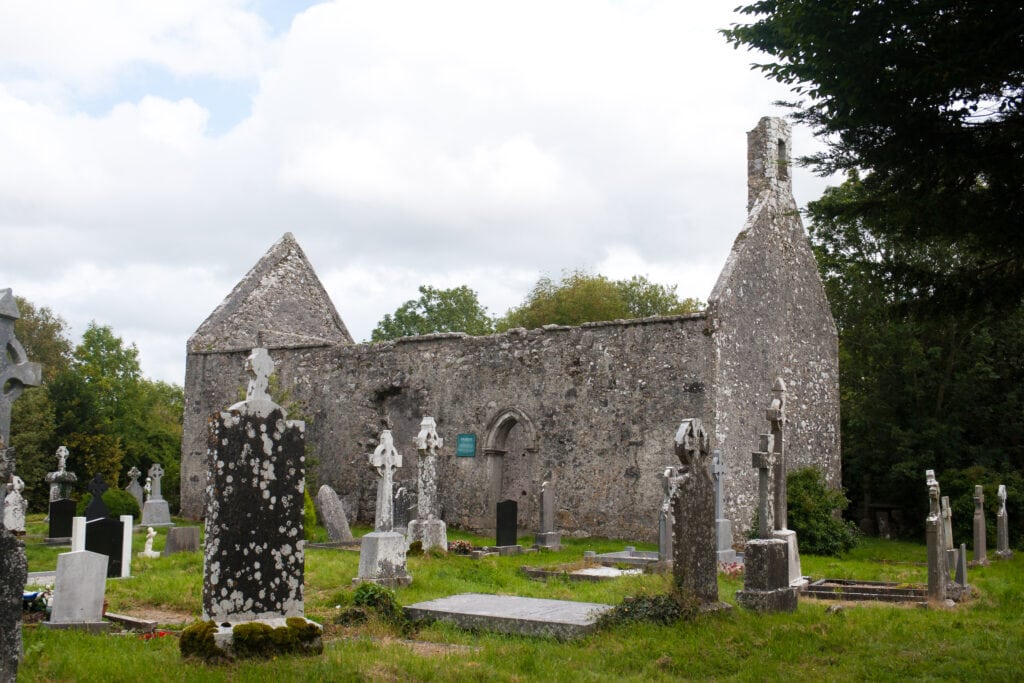
St. Declan – July 24
Declán is a saint who brought Christianity to Ireland before Saint Patrick He was regarded as a patron saint of the Déisi of East Munster. The Déisi were considered a ruling class in Munster at the time.
Déclán is remembered for having converted the Déisi in the late 5th century and for having founded the monastery of Ardmore (Ard Mór) in Waterford
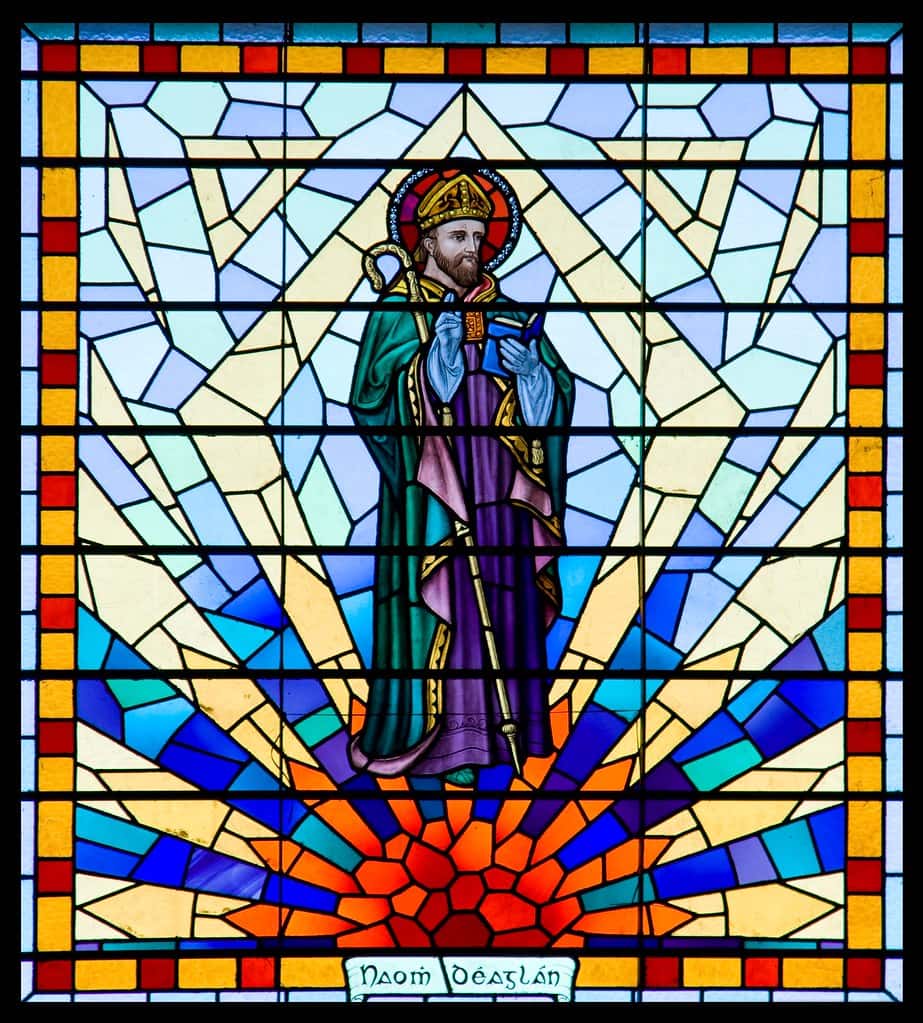
Places to visit associated with St. Declan
St. Declan’s Oratory
Overlooking Ardmore beach, and known locally as ‘The Beannachan’ this small oratory is believed to have been built over the burial site of St Declan. A flagstone that covered the saint’s grave has long gone, probably due to relic-collecting. A hollow in the southeast corner is now pointed out as the grave.
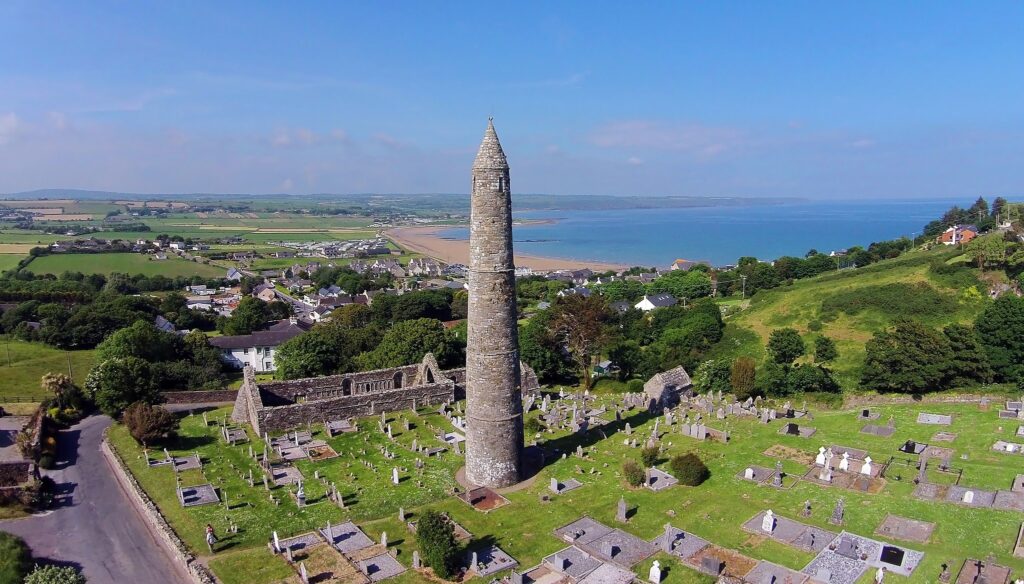
St. Declan’s Pilgrim Path
The Pilgrim path between Cashel in Tipperary, and Ardmore in Waterford, has been nicknamed the “Irish Camino.” It follows the route that Declan took when going to Cashel to meet Saint Patrick in the fifth century.
St. Declan’s Holy Well
The Holy Well can be found at the beginning of the Cliff Walk and it was a baptistery for St. Declan who Christianised the area of Decies before St. Patrick came in 431 A.D. Declan later went into seclusion in a little cell where the ruined church now stands beside the well.
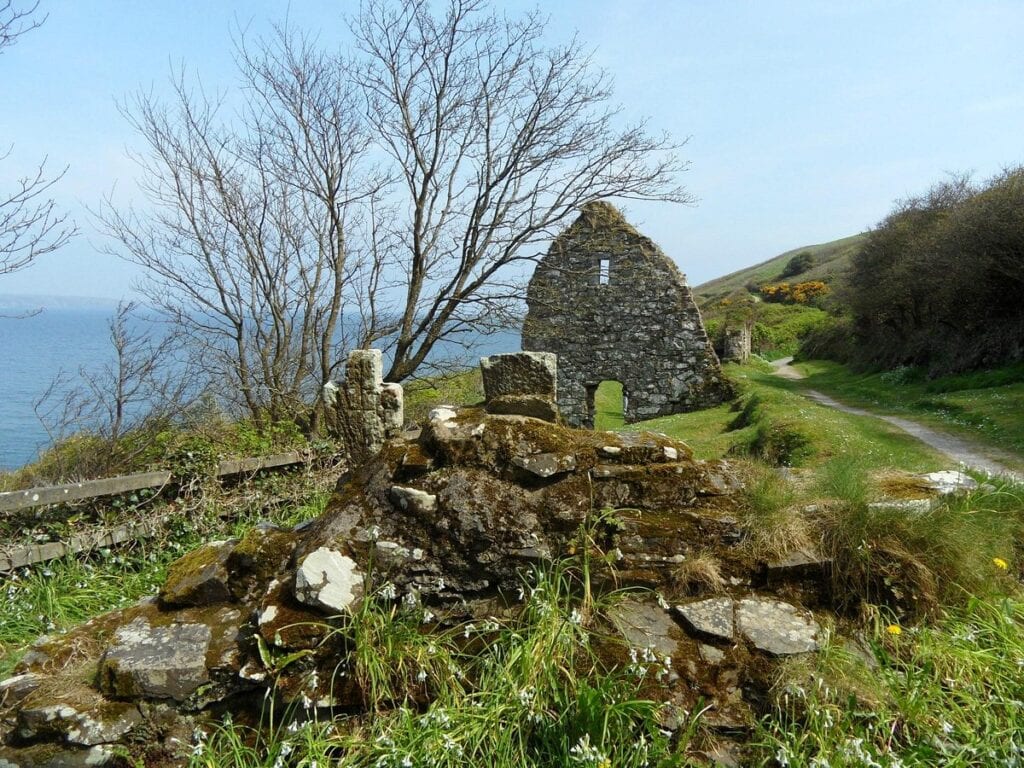
St Kevin – 3rd June
If you have been to Glendalough you will know that the Monastery there was built by Saint Kevin a hermit and a miracle worker. Ancient Irish tales say that Saint Kevin was descended from a royal line of the Leinster Kings and from the age of 7 was educated by St Petroc of Cornwall. He studied for the priesthood at 12 and after he was ordained lived as a hermit in a cave at Glendalough deep in the Wicklow Mountains.
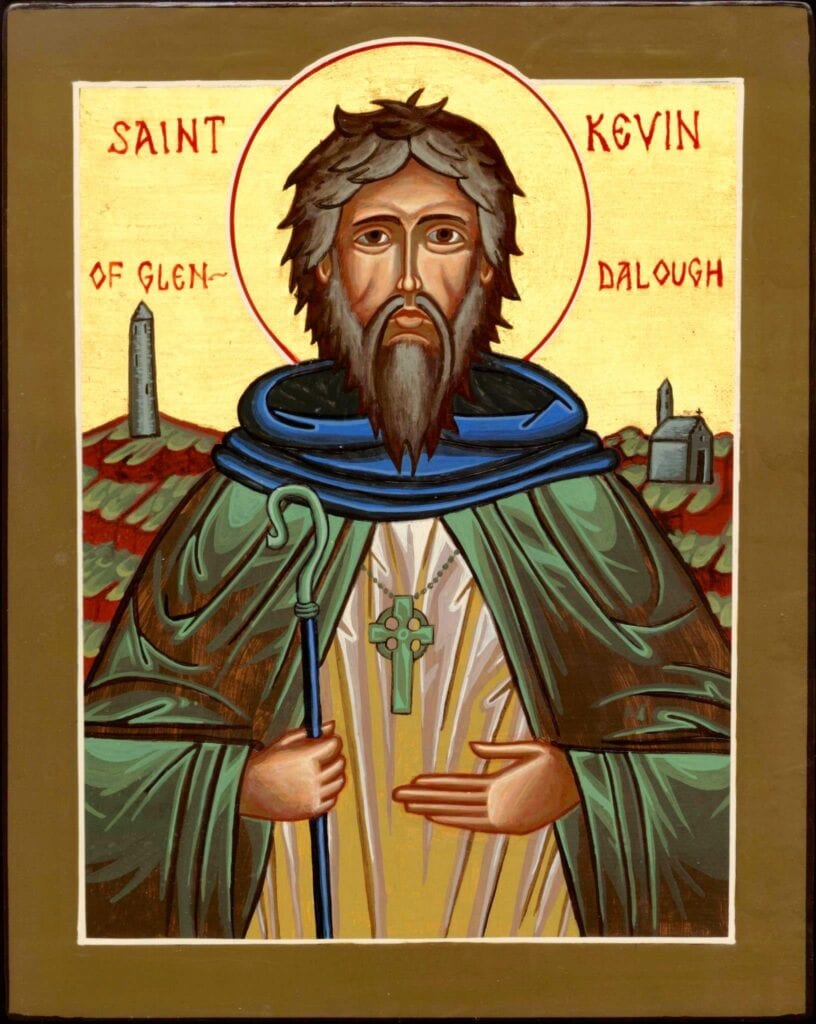
By the 9th Century, Glendalough became one of the country’s most important monasteries and an honoured place of pilgrimage.
Places to visit associated with St. Kevin
Glendalough Monastic Settlement
This early Christian monastic settlement was founded by St. Kevin in the 6th century and from this developed the ‘Monastic City’. Despite attacks by Vikings over the years, Glendalough thrived as one of Ireland’s great ecclesiastical foundations and schools of learning until the Normans destroyed the monastery in 1214 A.D. St.
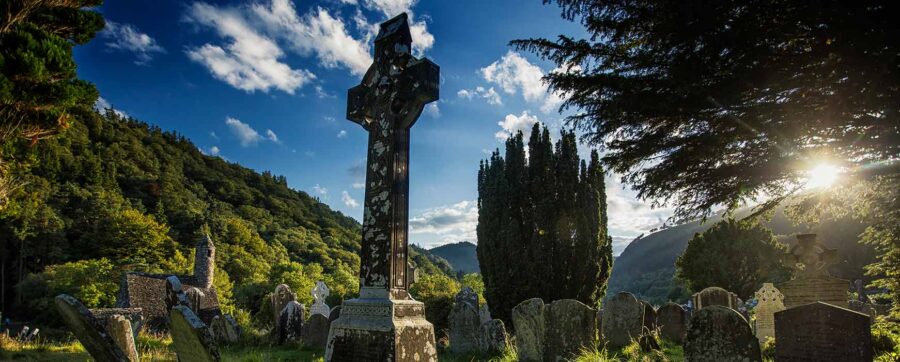
The Glendalough monastic settlement is the earliest in Irish history, founded by Kevin (Irish: Coemhghein), a descendant of one of the ruling families of Leinster. As a child, he studied under three holy men (Eoghan, Lochan and Eanna) and as a young man, he went to live at Glendalough “in the hollow of a tree.”
Kevin lived the life of a hermit in a cave, his friends were the animals and the birds and he preferred a solitary life away from his followers. He was a hermit for 7 years, went barefoot and ate very little. By 540, his fame had spread far and wide and his followers came to Glendalough and developed a seminary and monastery in his name. Eventually, Glendalough, with its seven churches, became one of the chief pilgrimage destinations in Ireland.
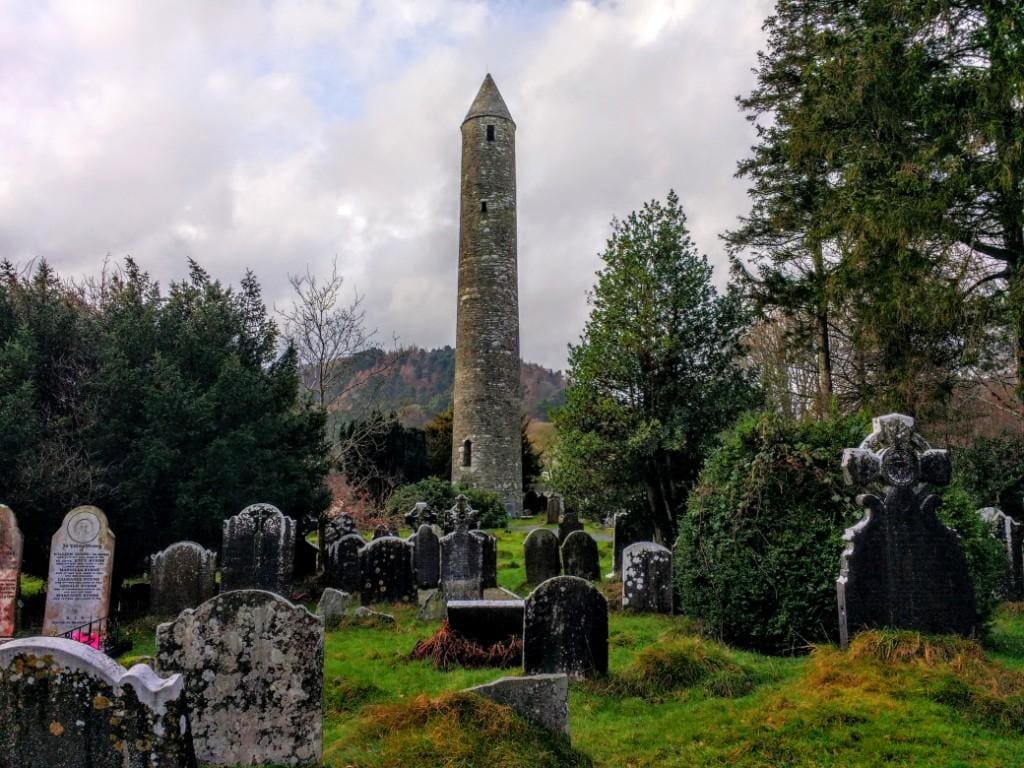
St Oliver Plunkett – 1st July
St. Oliver Plunkett was made a saint because of his martyrdom at the hands of the English during the 17th century. He is Ireland’s Patron saint of Reconciliation.
Oliver Plunkett was from a noble Irish family and was educated in Rome where he stayed during the many years of persecution for Catholics in Ireland under the Penal Laws. In 1669 he was appointed Archbishop of Armagh, Primate of all Ireland and he returned to Ireland.
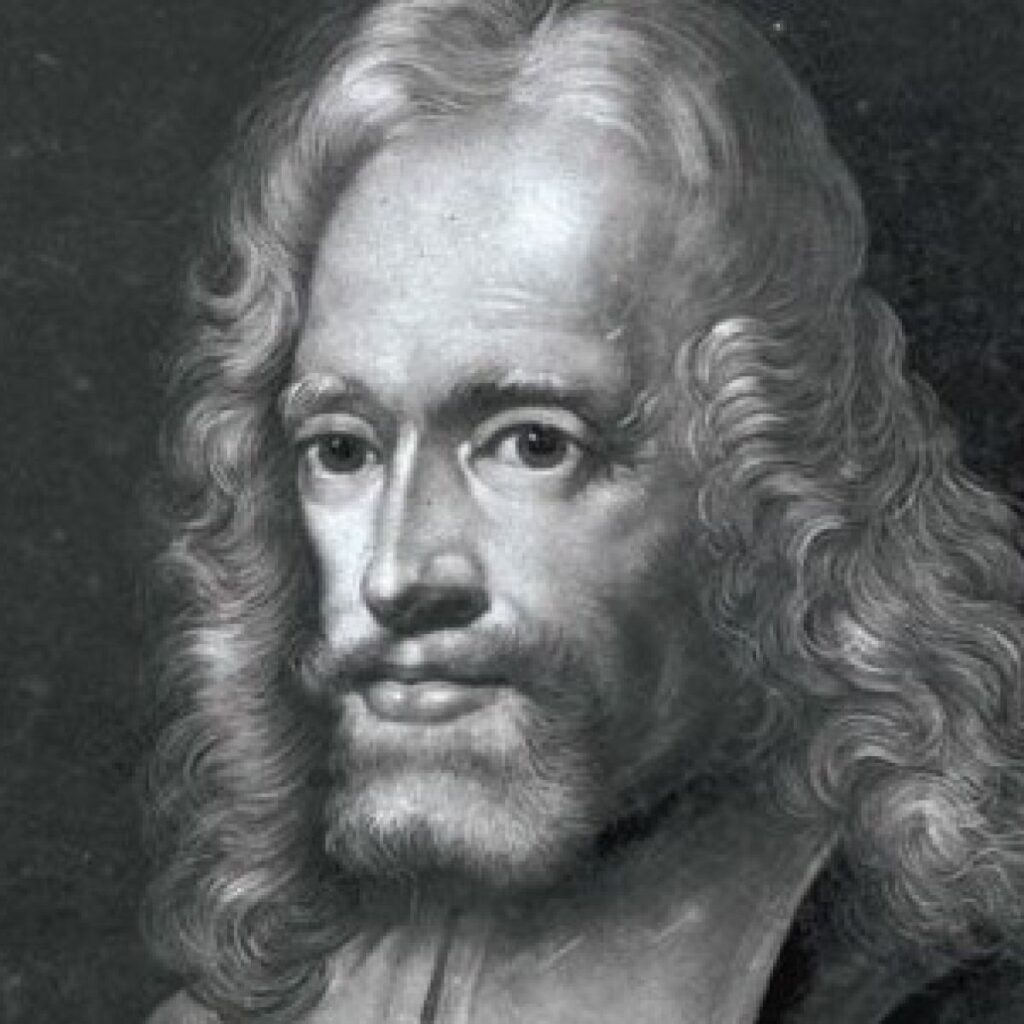
Plunkett had returned to bring the Catholic faith back to Ireland and he built a Jesuit School in Drogheda but he was accused of treason and went into hiding.
In 1679 he was arrested on charges of treason and sent to London to face trial. He was found guilty at Tyburn and sentenced to be hung, drawn and quartered. His body was buried in two boxes but the remains were exhumed in 1683 and moved to a Benedictine Monastery in Germany. Eventually, his head was brought to Rome and then moved to Armagh and from there it was rested at Saint Peter’ Church.
He was the last Catholic to die in England for his religion. In 1029 he was beatified as an Irish martyr and then in 1975, he was made a saint.
Places to visit associated with St. Plunkett
St. Peter’s Church Drogheda, Louth
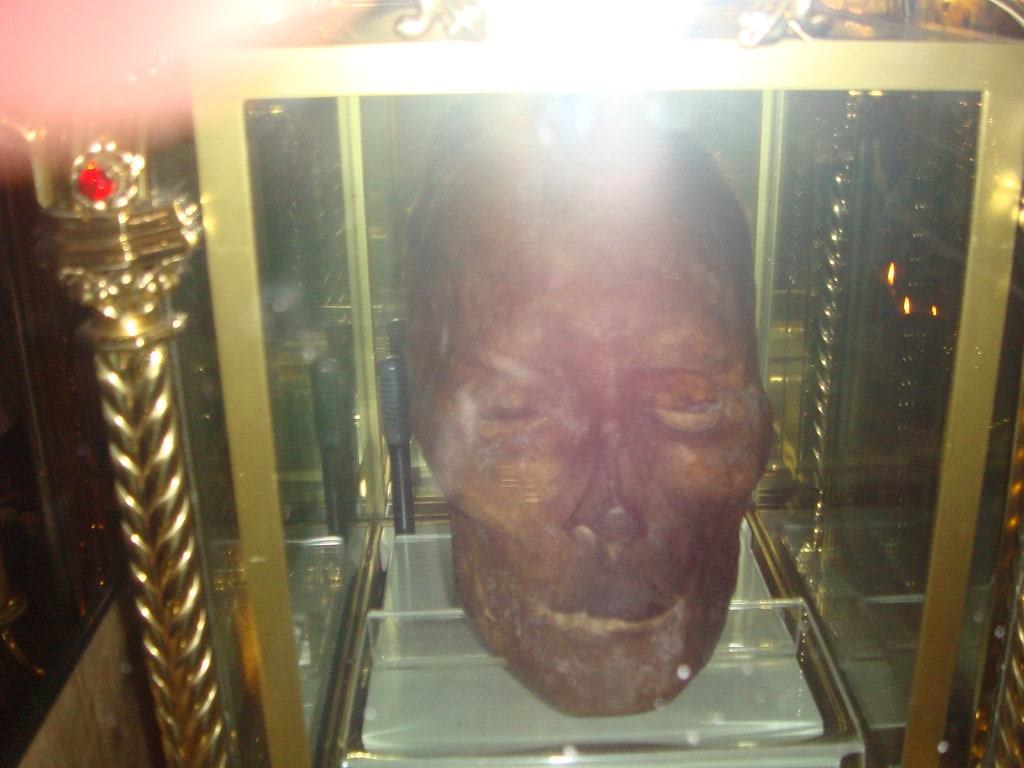
The executed saint’s head is on display in St Peter’s Church in Drogheda, County Louth.
St. Buíthe – no feast day
Monasterboice is near Drogheda, and it was founded in the 5th century by St. Bhuithe, one of St. Patrick’s original followers. Today the ruins are known for one of Ireland’s best collections of high crosses, in particular, The South Cross or Cross of Muiredach, the Tall Cross or the West Cross.
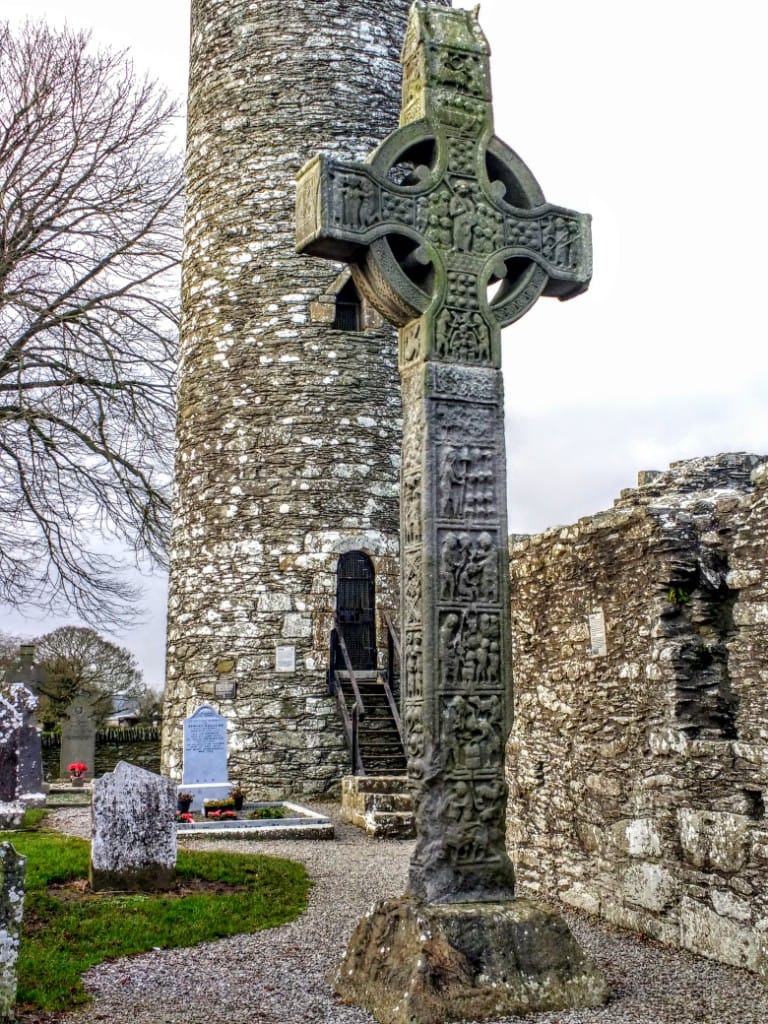
There is evidence at Monasterboice that prior to its ‘founding’ by St. Bhuithe in the late 5th century is said to have been a significant place for pagan Celts. Vikings captured the settlement in 968 AD and were expelled by Donal, the Irish high king of Tara. St. Bhuithe’s Monastery was an important centre of spirituality and scholarship until the Cistercians arrived at nearby Mellifont Abbey in 1142, after which Monasterboice became neglected.
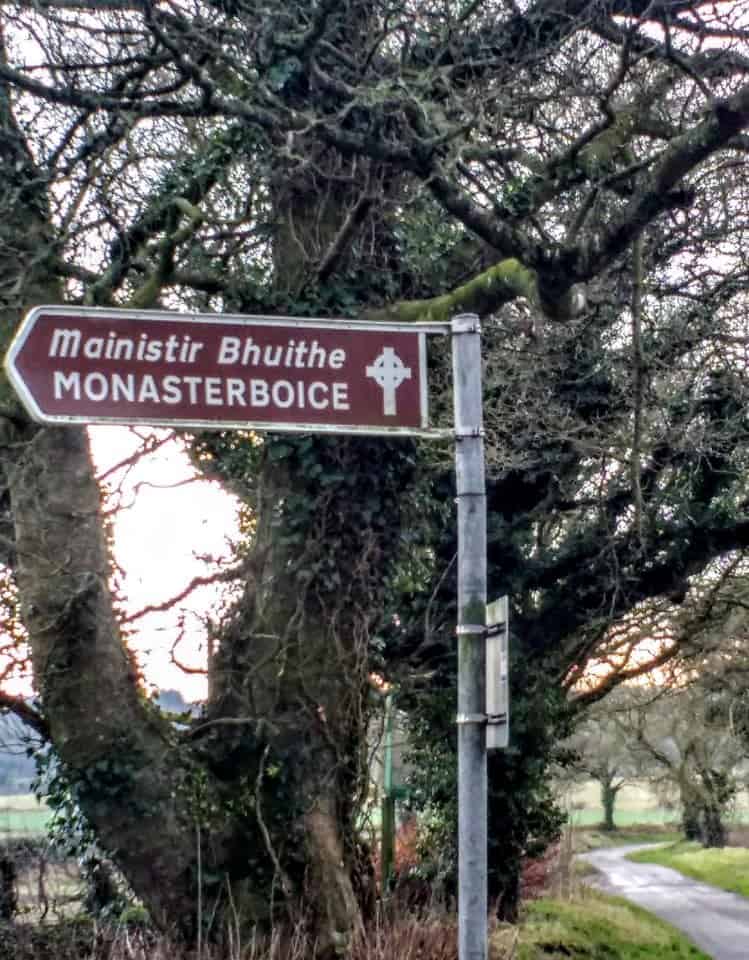
Monasterboice has many interesting features to explore, but the clear highlight is its superb10th century high crosses. Like murals and church sculptures, these magnificent examples of Celtic art brought the Bible to life for those who could not read (which was most people).
What or who are the 12 apostles of Ireland?
The Twelve Apostles of Ireland, also known as the Twelve Apostles of Erin, were twelve early Irish saints who studied under St. Finian at Clonard Abbey in the 6th century. These monks were instrumental in spreading Christianity throughout Ireland and were considered some of the most influential figures in Irish monasticism. The Twelve Apostles of Ireland are:
- St. Ciarán of Saighir (the Elder)
- St. Ciarán of Clonmacnoise (the Younger)
- St. Brendan of Birr
- St. Brendan of Clonfert (the Navigator)
- St. Columba of Terryglass
- St. Columba (Columcille) of Iona
- St. Mobhí of Glasnevin
- St. Ruadhán of Lorrha
- St. Senan of Iniscathay (Scattery Island)
- St. Ninnidh of Inismacsaint
- St. Lasserian mac Nadfraech (Molaisse) of Devenish
- St. Canice (Cainnech) of Aghaboe
These saints were known for their ascetic lives, their commitment to education and missionary work, and their foundational roles in the establishment of monastic communities throughout Ireland.
This is a very short list of 10 famous Irish Saints and you can visit the places in Ireland where the saints were said to walk. Have you visited any of these sites?
